






Saudi Broadcasting Authority drives revolutionary overhaul of broadcast infrastructure




navigate the current and future challenges in broadcast,







Managing Director Raz Islam raz.islam@cpitrademedia.com
+971 (0) 4 375 5471
Managing Partner Vijaya Cherian vijaya.cherian@cpitrademedia.com
+971 (0) 55 105 3787
Director of Finance & Business Operations
Shiyas Kareem shiyas.kareem@cpitrademedia.com
+971 (0) 4 375 5474
Editor Vijaya Cherian vijaya.cherian@cpitrademedia.com
+971 (0) 55 105 3787
Sub Editor Aelred Doyle
Group Sales Director Sandip Virk sandip.virk@cpitrademedia.com
+971 (0) 50 929 1845 / +44 (0) 7516 993 862
Art Director Simon Cobon simon.cobon@cpitrademedia.com
Designer Percival Manalaysay percival.manalaysay@cpitrademedia.com
Photographer Maksym Poriechkin maksym.poriechkin@cpitrademedia.com
Events Executive Priyanka Raina priyanka.raina@cpitrademedia.com
Data & Production Manager
Phinson Mathew George phinson.george@cpitrademedia.com
Web Developer Abdul Baeis abdul.baeis@cpitrademedia.com
Web Developer Umair Khan umair.khan@cpitrademedia.com
Dominic De Sousa (1959-2015)
Published by
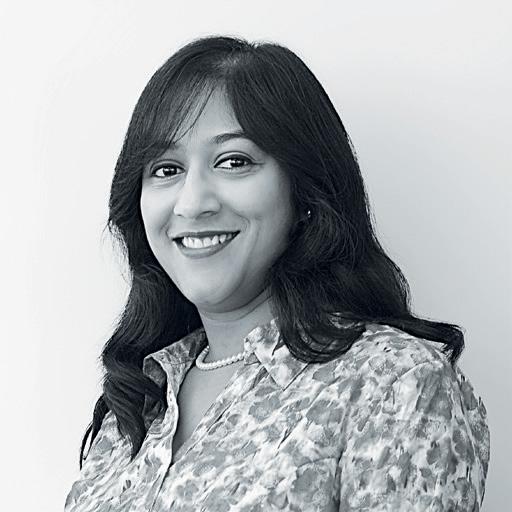
CABSAT is celebrating its 30th anniversary this year and I am glad to have been part of 20 years of that journey, seeing it morph from the small show that it was back then to the dynamic event it has become today, reflecting the sweeping changes that have taken place in the Arab world in recent years.
Although we started slow with just HD on the horizon twenty years ago, the last five years have seen an avalanche of technologies disrupt the market and often, before we have had time to recover from one in terms of investment and transition, we find ourselves hit by the next big wave. Besides this, we are witness to several parallel journeys and all are evolving equally rapidly. On the one hand, we have the metaverse, the virtual, augmented and mixed realities and the NFTs to contend with; on the other, we have AI, generative AI and all its many offshoots and the services they are able to provide within the blink of an eyelid.
I’m personally delighted that I can leave the tedious tasks to AI and get on with the jobs that require a brain. As a journalist, I’m particularly grateful to have left behind the days when the transcription of an hour-long interview would take a few hours. Of course, by the time you had finished the transcription, the information was etched in your brain; you knew what to peg your story on and the key highlights. But I’d also probably have had to contend with carpal tunnel syndrome a few years down the line. Today, I can listen to the interview at 1.5x speed, jot down the important points and let Descript get on with the tedious part.
AI was a big part of the discussions at NAB. That will continue at CABSAT. And a great place to witness the new products that are revolutionising our part of the world will be the BroadcastPro Manufacturer Awards on May 22 at the H Hotel, just a zebra crossing away from the Dubai World Trade Centre. Don’t forget to book a seat. See you at the show.
 VIJAYA CHERIAN, EDITORIAL DIRECTOR
VIJAYA CHERIAN, EDITORIAL DIRECTOR



Al Habtoor Group expands business portfolio with new TV channel in Lebanon; Red Sea Film Foundation and Effat University to support female filmmakers; AMT expands operations to Abu Dhabi; MBC Group appoints Samar Akrouk MD of MBC Studios; and more
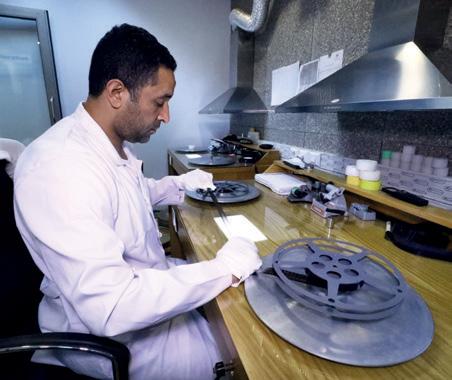
Egyptian Media Production City takes the lead in a major initiative to restore Egypt’s iconic films


CABSAT SPECIAL WHAT’S NEW AT THE SHOW
A look at some of the new launches from manufacturers and service providers at CABSAT 2024
In line with Saudi Vision 2030, Saudi Broadcasting Authority is leading a groundbreaking initiative to overhaul its broadcasting infrastructure. In an exclusive interview with BroadcastPro ME, Hatem Mohammad Abu Nasif, VP of Engineering Affairs at SBA, sheds more light on this journey
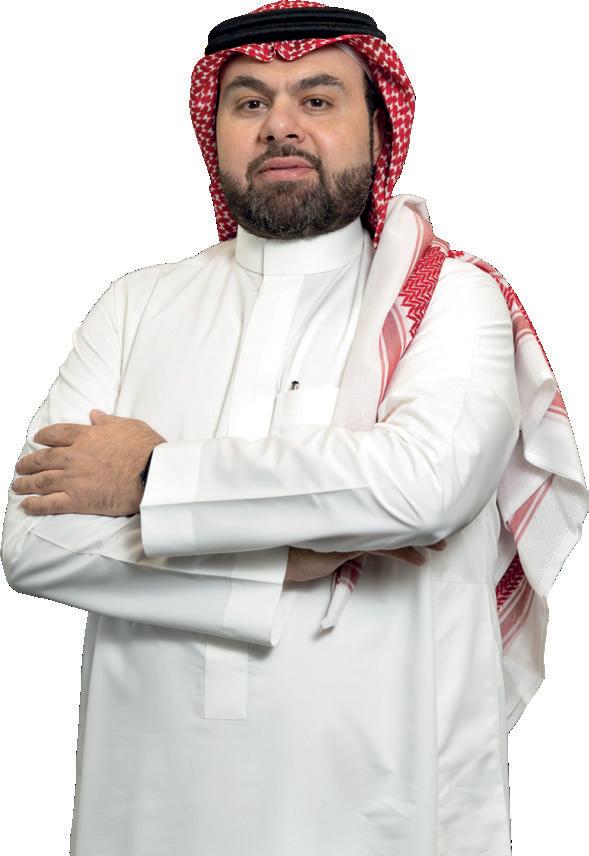

The rapidly changing news landscape in the MENA region, its opportunities and challenges were the focus of a panel discussion hosted by BroadcastPro Middle East in Saudi Arabia. We bring you a summary of the discussion
French-Lebanese short film Les Chenilles has been receiving accolades in the festival circuit. The directors and producer offer a behind-the-scenes glimpse into their artistic journey
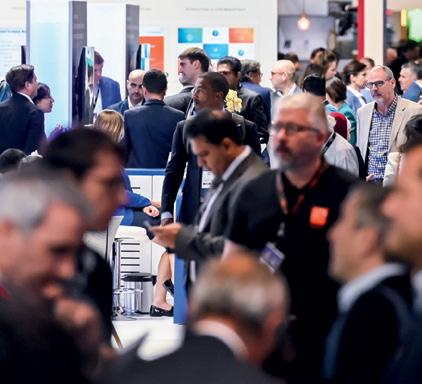
The broadcaster’s new IP production centre in Doha is part of a larger expansion plan 44
Majed Al Suwaidi advocates for increased involvement in Arabic content creation 60


FILM
Red Sea Film Foundation participates in 10th Saudi Film Festival

FILM
African animators spotlight untapped animation opportunities at SAC 2024

SATELLITE
NASA technology grants to advance Moon to Mars space exploration


Saudi Film Commission takes centre stage at 10th

OPINION: The limitations and opportunities of video indexing for Arabic content
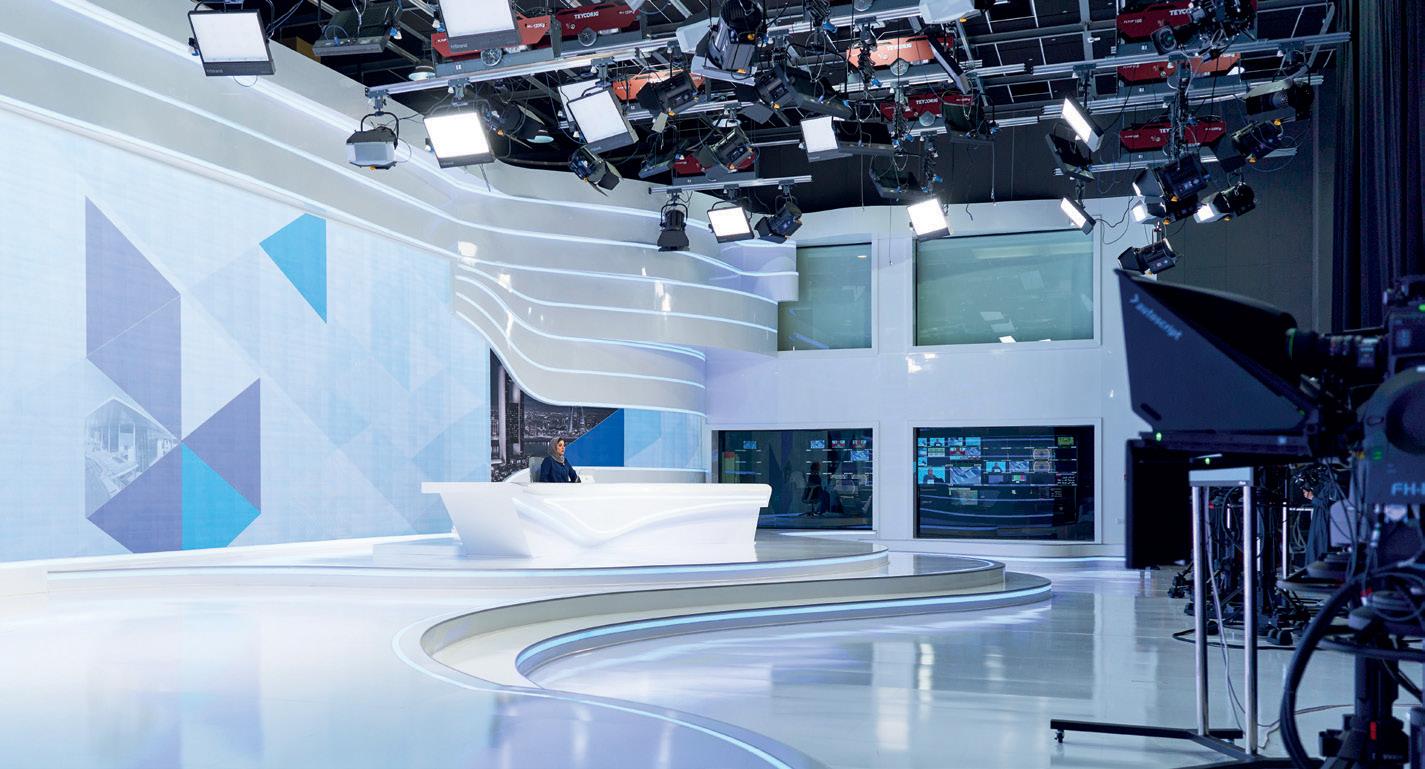

PANEL: Building resilient infrastructure in an evolving media landscape
Let’s create a vibrant online broadcast community!
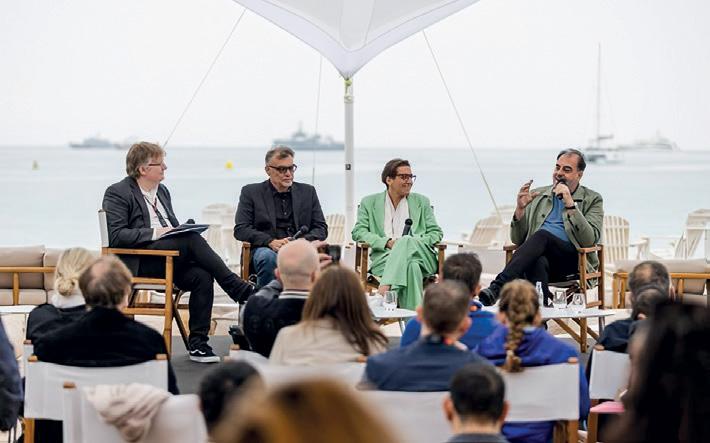




Arab Cinema Centre to celebrate 10 years with five events at Cannes 2024
The ACC’s programme for this year will include four distinct panel sessions, alongside the traditional beach-side ceremony
FILM
Saudi documentary Horizon nabs Platinum Hermes International Creative Award
The documentary highlights the wildlife and natural resources in the Kingdom

TV
MBC Group launches
Arabic adaptation of That’s My Jam

NEWS
Sarajevo Film Festival to honour Palestinian filmmaker Elia Suleiman
SATELLITE
SES’s O3b mPOWER system starts providing connectivity services
It will target mobility, government, enterprise and cloud markets, with new onboarding plans for customers

COMMS
Hughes opens new manufacturing facility and 5G incubation centre
OTT
Ramadan 2024 sparks surge in user engagement on digital platforms: DICM
According to Google’s Ramadan Insights research, households in the MENA region have the most internet-connected devices globally
Cinema sector in Saudi Arabia generates $986m in revenue since 2018
Saudi Arabia now boasts 66 cinemas, housing approximately 618 screens and offering a total of 63,373 seats

TV
Bloomberg TV rebrands morning show in MEA

OTT
Manga Productions showcases Saudi Arabia in new anime series
Grendizer U








05/24
Al Habtoor Group has announced details of its TV channel set to broadcast from Beirut. The channel will generate approximately 300 jobs initially across journalism, production and art, with further employment prospects anticipated as the project evolves.
Khalaf Ahmad Al Habtoor, Founding Chairman of Al Habtoor Group, said: “The resilience and spirit of the Lebanese

are truly inspiring. We aim to harness this energy to spread hope, happiness and
positivity through our new channel. Our commitment is not only to establish a channel but also to foster a thriving media environment for professionals. This venture is more than just broadcasting. We are dedicated to empowering the local workforce and contributing positively to Lebanon’s economic revival.”
The initiative has garnered favourable feedback and endorsement
from the Lebanese government, ensuring a seamless licensing process and a hospitable environment for this initiative. Furthermore, Al Habtoor Group is embarking on the development of a studio city in Lebanon spanning 100,000sqm, slated to emerge as a dynamic hub for film and TV production, bolstering the country’s allure as a premier destination for international filmmakers.
The Red Sea Film Foundation has collaborated with Effat University for the second consecutive year under the Women in Cinema programme, aimed at empowering budding female filmmakers. Through the Red Sea Fund, a subsidiary of the Red Sea Film Foundation, 22 diverse film projects will receive comprehensive support spanning
development to post-production.
Mohammed Al-Turki, CEO of Red Sea Film Foundation, said: “We take immense pride in our collaboration with Effat University as part of our Women in Cinema initiative, which has significantly contributed to the support and empowerment of women on local, regional and international fronts.”

Dr Haifa Reda Jamal Al-Lail, President of the university, added: “We are delighted to join forces with the Red Sea Film Foundation in empowering women in cinema and showcasing the creativity of our students across various cinematic arts, including short films, animation and documentaries.”

Advanced Media, a distributor of professional broadcast and production equipment in the MENA region, extended its operations to Abu Dhabi with the opening of a new retail outlet last month.
Since its establishment in 2002, the firm has actively pursued avenues for business growth, including regional expansions.
Following the successful establishment of a service centre in Cairo and the
opening of an official branch in Riyadh, Advanced Media has now expanded its reach to Abu Dhabi, the capital of the UAE. In March 2024, it unveiled its latest store in Abu Dhabi National Towers, adjacent
to the St. Regis Hotel. Spanning 90sqm, it offers a comprehensive range of brands represented by Advanced Media Technology (AMT), along with identical services and warranty coverage for all products. Opening hours are 10am7pm, Monday to Saturday.
Alaa Rantisi, GM of Advanced Media, said: “I’m pleased to announce our expansion to Abu Dhabi. This new retail outlet reflects our commitment to serving customers across the region. We’re proud to contribute to the city’s vibrant business landscape and look forward to building solid relationships with the Abu Dhabi community.”
Saudi Film Commission has announced significant reductions in licensing fees for operating cinemas, paving the way for a considerable decrease in cinema ticket prices across the nation. These reductions encompass licences for permanent and temporary cinemas, as well as specialised needs cinemas.
The Film Commission has disclosed the revised cinema licence costs
following a significant reduction. For licences to operate permanent or temporary cinemas, or those with specialised needs, the updated costs are as follows:
In A category cities, the fee for permanent cinemas has been reduced from $55,985 to $6,664, with similar reductions across all categories. Additionally, the commission has lowered the fee for licences to operate
cinemas showcasing one or more films on a permanent or temporary basis. In A category cities, the fee is now $799 per branch instead of $5,598 per screen, with similar reductions across the board. The Board’s meeting also resulted in the transfer of licensing jurisdiction for production studios, visual and audio content production, and distribution of
cinematographic films to the Film Commission. Moreover, it approved the activation of financial compensation discounts for cinema ticket revenues and fees, aimed at encouraging the private sector to lower ticket prices and offer attractive promotions to the public. These initiatives are expected to fuel the expansion of cinema screens and promote wider local screenings of Saudi films.




• Intuitive touchscreen UI
• Dedicated Remote Controller
• Compact 1RU or 2RU server



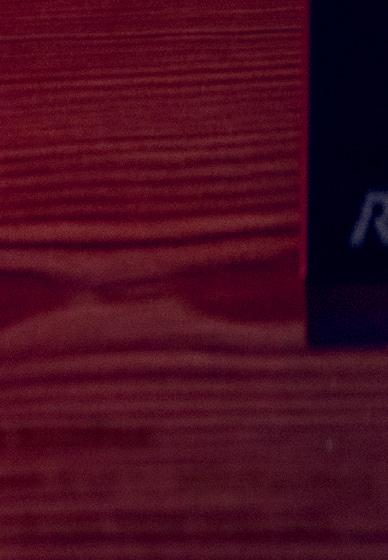

MBC Group has released its financial results for FY 2023 (ending 31 December 2023), showcasing growth across its core business segments. The company reported a 6.2% increase in total revenues compared to FY 2022, reaching $987.7m.
Gross profit surged by 43.7% year-on-year to $245.7m, while net income saw a remarkable 44.8% rise to $18.5m, exceeding the group’s targets. This performance was attributed to a substantial decrease in Shahid’s net losses

MBC Group has appointed Samar Akrouk Managing Director of MBC Studios. With nearly three decades of dedicated service to MBC Group, she will also retain her position as Group Director of Production. In her new capacity, Akrouk will spearhead MBC Studios’ efforts to
expand the global reach of its content, capitalising on the growing demand for non-English-language television content in international markets.
As Group Director of Production, Akrouk will continue to oversee MBC Group’s non-scripted productions for MBC TV channels, Shahid and social media. This encompasses over 1,500 hours of original content annually, spanning chat shows, social programming, game shows, competitions and local adaptations of renowned international franchises such as Arab Idol, Arab’s Got Talent, Project Runway, Top Chef and X Factor Arabia.
and a significant revenue boost from advertising video-on-demand (AVOD) and subscription videoon-demand (SVOD) platforms. Net income margins for FY 2023 were 2%. The announcement marks MBC Group’s first
Renowned fashion designer Alana Hadid has taken on the role of Creative Director at the newly launched Watermelon Pictures, a “Palestinian-owned independent film distribution, production and financing” company. Its debut feature is the documentary Off, which looks at the story of the Walled Off Hotel, a Palestinianmanaged establishment in Bethlehem. It explores the lives of Palestinians
Viaccess-Orca (VO) has named Thomas Kohler its new CEO, following the retirement of Philippe Léonetti. With more than 20 years of international experience in senior management positions at Orange, a major telecommunications operator, Kohler brings a wealth of expertise in business development, innovation and company transformations to VO.






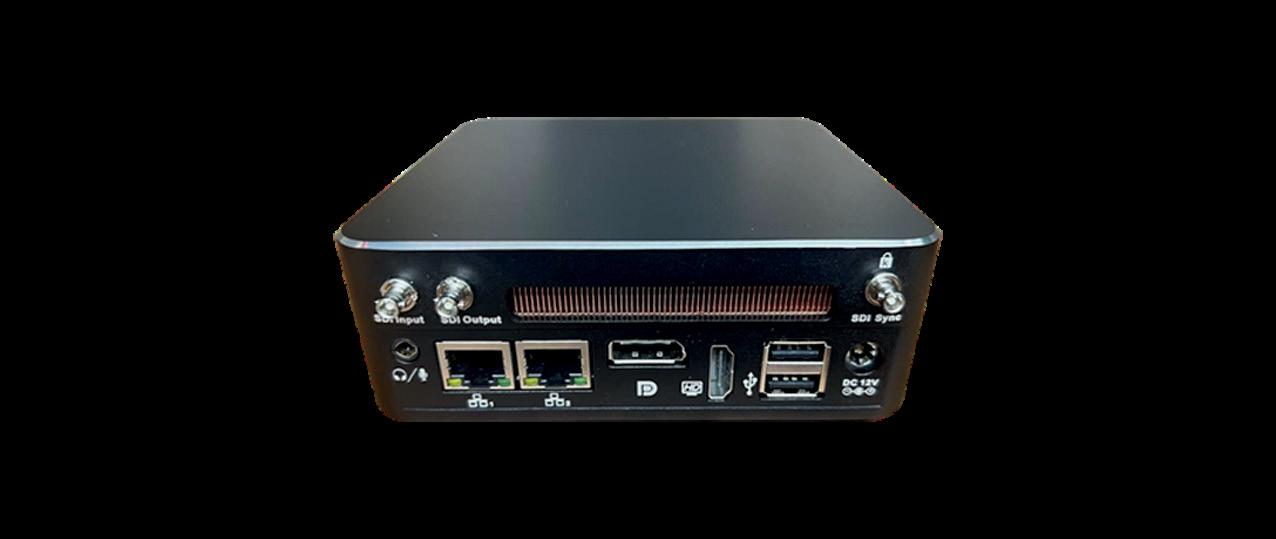



UFC has joined forces with StarzPlay to announce an exclusive multi-year broadcast partnership for the MENA region. A dedicated 24/7 StarzPlay Sports UFC channel will be launched across the region, accompanied by comprehensive UFC content integration on the StarzPlay App, accessible via internet-enabled devices, smart TVs, gaming consoles and regional IPTV services.
Avid has named Wellford Dillard as its next CEO. He takes the reins from Jeff Rosica, who will continue to support the company in an advisory capacity.
Bringing more than 20 years of experience in the software industry, Dillard joins Avid from Marigold, where he led the company as CEO, providing omnichannel marketing SaaS solutions for businesses. Prior to Marigold, he was CFO at vertical software companies.

StarzPlay will livestream every UFC event, including all preliminary bouts. Additionally, StarzPlay will produce localised Arabic-language content and offer extensive UFC on-demand content,
featuring preview shows and original programmes such as UFC Countdown and UFC Connected.
David Shaw, UFC Executive VP, Head of International and Content, said: “StarzPlay has come on board with fresh and innovative thinking on how to tailor our content across the region and we can’t wait to kick things off with UFC® 300.”
MBC Group has renewed its strategic partnership with Parrot Analytics, a content valuation and global entertainment analytics firm. This is an expansion of Parrot Analytics’ insights into the Arabic-speaking entertainment market, as it works closely with MBC Research to enrich its database with approximately 1,500 Arabic titles.
Amit Devani, Director of Insights EMEA at Parrot Analytics, said:
“We are delighted to be renewing our partnership with MBC Group as we continue to build on our Arabic-language content valuation and
analytics offering in the region and globally. MBC Research has been an asset to this partnership, offering us access to their programming titles and genres, which we utilise to measure their impact among viewers. Content valuation is a key asset for any major broadcast network looking to measure and assess its current offerings and shape its content going forward. I look forward to us continuing to work together to provide the very best insights on what audiences want in the years to come.”
Leila Mezher, Senior Manager for Research and Market Intelligence at
MBC Group, stated: “Our data-driven approach to programming allows us to understand and anticipate the needs of our audiences, ensuring that MBC Group continues to lead in innovation, engagement and diverse storytelling. Parrot Analytics allows us to truly understand what works, what doesn’t, what we need to create more of and what new ideas audiences are looking for.”
Parrot Analytics has been working with MBC since 2020 to measure the success of its titles, including Rashash (2021), Stiletto (2022) and The Giza Killer (2023).



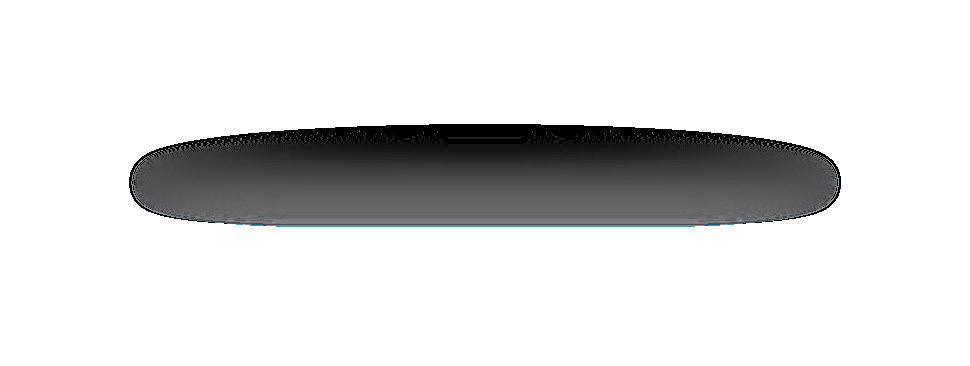








Miramax, a joint venture between beIN Media Group and Paramount Global, has appointed Executive Producer and former MGM President of Motion Picture Group Jonathan Glickman as its new CEO. Miramax has also acquired certain film, television and other projects from Panoramic Media, an independent production company founded by Glickman in 2020.
During his tenure at Panoramic Media, Glickman produced notable films such as Creed 3 and The Underdoggs, while also serving as an executive producer for Netflix’s Emmy-nominated hit

Wednesday. He is currently executive producing the Netflix limited series Zero Day, featuring stars like Robert De Niro and Angela Bassett.
Glickman’s extensive industry experience includes producing over 40 films, ranging from commercial hits like the
Rush Hour franchise to critically acclaimed works like While You Were Sleeping. As President of MGM’s Motion Picture Group for over eight years, Glickman oversaw blockbuster successes including the highestgrossing James Bond films and revitalised the
Qatari network Alkass has enhanced its production capabilities with the EVS LiveCeption Signature solution for premium live production and replays. Alkass will replace its legacy XT3 servers with XT-VIA servers, accompanied by the integration of IP-based LSM-VIA replay systems. This solution will be deployed across the Alkass fleet of OB trucks in August.
The new solution ensures support for all the latest formats and codecs. With fast and direct access to all network content, operators can navigate through vast amounts of live content efficiently, streamlining workflows and enabling the creation of replays and highlights for every captured moment.
Alkass has the option to integrate XtraMotion,
EVS’ AI-based super slow-motion service.
Alkass GM Issa bin Abdullah Al Hitmi said: “Having experienced the benefits of EVS’ XS-VIA servers in our studio operations, integrating their XT-VIA servers in our OB trucks was a natural step for us.
“Expanding our partnership with EVS, we look forward to elevating our production operations to even greater heights.”
Rocky franchise with Creed and Creed 2.
Nasser Al-Khelaïfi, Chairman of BeIN Media Group, said: “Jonathan’s leadership will see Miramax broaden our already-extensive IP base and build upon our commitment to compelling original content. We will also focus on expanding Miramax’s footprint across the globe, with local storytelling and production outside of Hollywood, across movies and series. Together with our partners at Paramount, we welcome Jonathan to the team and look forward to continued creativity, innovation and growth.”
The Walt Disney Company Middle East has announced the relaunch of Star Channels for the MENA region. It will be a new hub for globally acclaimed shows and movies, curated to resonate with regional viewers. The channels offer a mix of lifestyle, action, adventure, comedy and drama series, alongside blockbuster films from leading studios.
Accedo and Brightcove have joined forces with Al Sharqiya Group to elevate its 1001 OTT streaming service by introducing one of Iraq’s first SVOD platforms, alongside live linear channels.
Developed in collaboration with OSN+, Rotana and StarzPlay, the platform boasts an extensive catalogue of on-demand content catering to its viewers’ preferences. In partnership with Brightcove and Jump Data Driven Video, Accedo is spearheading the delivery of an end-to-end OTT application solution designed to offer Sharqiya

customers a customised SVOD experience. It will leverage Brightcove’s global streaming technology solution, supported by JUMP Insights and Personaliser for advanced analytics, insights and recommendations.
Mohsen Khairaldin Garcia,
co-founder and CEO of 1001, said the collaboration will help position 1001 as a leading destination for entertainment in the Middle East.
Michael Lantz, CEO of Accedo, added: “As consumers increasingly demand flexibility and
convenience in accessing content, the introduction of one of Iraq’s first SVOD platforms sets a benchmark for innovation and customercentricity in the region.”
Justin Barrett, SVP of EMEA and APAC, Brightcove, added: “With a focus on viewer engagement and satisfaction, Brightcove ... is prepared to create an engaging OTT experience for Al Sharqiya with our advanced streaming platform to help them reach new audiences, deepen engagement and maximise content monetisation.”
Intigral, the media arm of stc Group, has signed an agreement with Beyond ONE, a digital services provider and TMT-sector (technology, media, telecommunications) investment and operations company.
The initial phase of this agreement will introduce stc tv services to Virgin Mobile KSA customers, which is part of Virgin Mobile Middle East and Africa, This collaboration marks a significant milestone in Intigral’s expansion efforts and paves the way for growth across
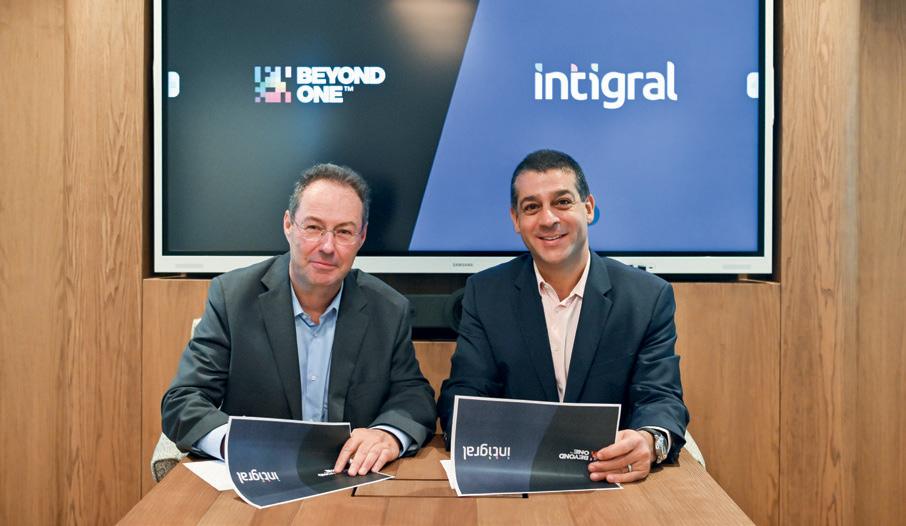
the MENA region.
This agreement with Beyond ONE is part of Intigral’s broader expansion strategy to deliver exceptional entertainment services. By bringing stc tv’s entertainment experience
to Virgin Mobile customers in Saudi Arabia, and later extending its reach to Oman, Kuwait and the UAE, this collaboration enriches the digital entertainment landscape in the Kingdom and the wider region.
With its multi-platform capabilities, stc tv offers a vast library of more than 28,000 video-on-demand (VoD) titles and access to 200+ linear TV channels including popular networks like MBC, Rotana and SBC, ensuring that Virgin Mobile KSA subscribers enjoy an innovative and seamless entertainment journey. In addition, subscribers can access bundled packages that provide a personalised selection of shows and films tailored to their preferences for a more enhanced viewing experience.
Raz Islam
+971 50 451 8213 raz.islam@cpitrademedia.com
Sandip Virk
+971 50 929 1845 sandip.virk@cpitrademedia.com


ENDORSED



Under the ambitious framework of Saudi Vision 2030, Saudi Broadcasting Authority is spearheading a transformative journey to revolutionise its broadcasting infrastructure. From the groundbreaking metamorphosis of Studio A to the seamless integration of cutting-edge IP and virtual technologies, Hatem Mohammad Abu Nasif, SBA’s VP of Engineering Affairs, talks to Vijaya Cherian about the broadcaster’s bold initiatives to redefine excellence in the Kingdom’s media landscape
State broadcaster Saudi Broadcasting Authority (SBA) has initiated an ambitious and long-term project to modernise its broadcasting facilities across the Kingdom in line with the Saudi Vision 2030 mandate. The first phase of this project includes the complete overhaul of Studio A, transitioning it to a fullfledged HD broadcasting facility.
This initiative will help enhance the quality and versatility of the studio to accommodate a wide range of programming, from news and sports to talk shows, harnessing both conventional and state-of-the-art virtual technologies. This includes comprehensive upgrades to the master control room (MCR), shifting it to an IP-based broadcast infrastructure and seamlessly integrating the new MCR IP router with SBA’s existing systems.
“Our strategic plan is to be the first in the region in terms of development and digital transformation as well as production and distribution. For that, we have a plan, and we started to execute this plan with some projects related to IP and AI, and
the distribution of radio in all of the cities in Saudi Arabia,” explains Hatem Mohammad Abu Nasif, Vice President of Engineering Affairs at SBA. “With these projects, we are fully aligned with SBA’s strategy, which, in turn, is aligned with Saudi Vision 2030 from our Crown Prince HRH
Mohammed bin Salman Al Saud.”
Our strategic plan is to be the first in the region in terms of development and digital transformation as well as production and distribution
HATEM MOHAMMAD ABU NASIF, VP OF ENGINEERING AFFAIRS, SAUDI BROADCASTING AUTHORITY
Abu Nasif, who has been with SBA for more than 20 years and in his current role for the last four, dons multiple hats at the broadcast entity as he also serves as Director General and Advisor to SBA’s strategic development unit. As chief of Engineering Affairs, the projects department, SBA’s technical affairs, its studios and signal distribution as well as the broadcaster’s maintenance and operations and spectrum management come under Abu Nasif’s remit.
“The engineering department is a centralised department here in Riyadh but we have departments in all the cities, including Jeddah, Makkah, Madinah and other areas around the Kingdom. The engineering department alone has around 850 employees. We are not just responsible for the production of content but also its distribution. We have a lot of DVB-T stations. Operating each of those stations and maintaining them is also part of our remit.”
Abu Nasif’s team worked closely with Saudi Arabian systems integrator
First Gulf Company, which oversaw all aspects of the project from design, engineering, procurement and integration to commissioning, training and after-sales support.
“We spent more than 500 hours in crafting something extraordinary with top designers, including a world-famous studio architect,” says Maya Shokor, FGC’s Key Account Manager on the project. “This journey included more than 2,000 hours of hands-on work at the site by over 150 dedicated team members, who helped bring SBA’s vision to life. The result is a breathtaking 6,500sqft studio with more than seven dynamic set designs and vast LED walls covering more than 3,400sqft with ultra-sharp visuals. The studio is equipped with top-line Grass Valley cameras, five on pedestals for ground coverage and one on a crane for sweeping shots.
At the core of this project is SBA’s cutting-edge control gallery, which boasts the latest 4ME Kayenne vision mixer. This project isn’t just about building a studio, it is about setting
This journey included more than 2,000 hours of hands-on work at the site by over 150 dedicated team members, who helped bring SBA’s vision to life
MAYA SHOKOR, KEY ACCOUNT MANAGER, FGC
a new benchmark for broadcasting excellence, highlighted by 90 beams of advanced lighting and sound systems that elevate every production.”
Besides the studio, a series of enhancements were undertaken to improve the productions even further. First on the docket was the overhaul of the Studio Lighting Power System. “Keeping in mind the latest broadcasting standards, we reconfigured the power distribution to ensure our studio lighting meets enhanced requirements for efficient and reliable illumination,” adds Shokor.
Next, the team turned its attention to fortifying system interconnectivity. Seamlessly integrating its MCR, playout systems and graphics on the backend became paramount. This seamless connection serves as the backbone of streamlined operations


and the key to delivering high-quality broadcasts. Simultaneously, the installation of advanced visual displays began to take shape. State-of-the-art screens were deployed to transform the studio’s visual dynamics, boosting the viewing experience and setting the stage for engaging productions.
Yet, perhaps the most formidable challenge lay in refining Studio A’s design. Here, the team blended the latest in virtual and augmented reality technologies with traditional set designs. The goal was to create adaptable sets for various presentation styles and the integration of LED displays and lighting within a 588sqm space. FGC approached this with a detailed project scope that included designing, engineering, procuring and integrating advanced broadcasting equipment. This ensured a systematic upgrade to HD, meeting both technical and operational requirements.
To address the design requirements, the project included the development of multipurpose shooting areas and incorporated advanced production technologies. This included a soundproof voiceover booth, the integration of a K
Frame Grass Valley HD mixer, a 48 Faders Lawo audio mixer and the addition of six HD cameras.
The renovation also focused on the control room, equipping it with state-of-the-art technology to support HD broadcasting. This upgrade was critical to transforming Studio A into a multifunctional space capable of producing high-quality content for a variety of shows.
The second part of the project was an IP-based MCR. “We have begun our IP journey with the MCR. We plan to gradually transition
all our other studios to IP. This integration particularly was vital to ensure smooth broadcasts and compatibility between our new and old technologies,” explains Abu Nasif.
Orlando Castro, Chief Technical Officer at FGC, says: “For over a decade, we have worked with SBA, helping them to innovate with new technologies. This IP MCR project underscores our commitment to seamless integration and reliability. Our expertise ensures not just a transition, but a transformation that sets new broadcasting standards.”
Our expertise ensures not just a transition, but a transformation that sets new broadcasting standards
ORLANDO CASTRO, CTO, FGC
Transitioning to IP-based broadcast infrastructure raised some critical concerns, especially where integrating the MCR IP router with the broadcaster’s existing systems was concerned. “Through detailed planning, we ensured the MCR IP router integrated smoothly with our legacy systems,” explains Abu Nasif. “This careful approach supports both our current broadcasts and paves the way for fully adopting IP workflows.”
Castro adds: “A fully redundant ST-2110 IP routing system has been implemented to uphold SBA’s broadcast integrity. This is
especially critical during live events where there’s no room for error.”
The transition to ST2110 IP-based infrastructure has brought some key advantages to the team. For one, there is greater flexibility within the MCR, enabling swift adjustments to signal paths without the constraints of traditional cabling. Moreover, the ST2110 standard inherently offers scalability, allowing for the strategic expansion of studio operations and preparing for the integration of UHD production and other emerging technologies. Efficiency has also seen a boost as workflows have been optimised. Separating video, audio and metadata into individual streams


have helped simplify processing and enhanced operational efficiency.
“Embracing the ST2110 standard positions Saudi TV at the forefront of the industry’s transition towards an IP-centric landscape, ensuring relevance and competitiveness in the future,” explains Abu Nasif.
One other important project that SBA completed recently is within the radio sector. With plans to revolutionise digital radio broadcasting as well as improve the quality and accessibility of radio broadcasting throughout the Kingdom, SBA installed new DAB+ transmitters in key cities and along critical highways. This initiative
will improve the clarity and reach of both governmental and private radio channels, ensuring a superior listening experience nationwide.
Adam Moustafa Hamza, Director of Project Delivery at FGC, remarks:
“Deploying the DAB radio system in major Saudi cities marks a significant advancement in our digital broadcast capabilities. Through collaborations with GatesAir, ST Engineering and others, we’re not just expanding coverage, we’re enhancing the quality and reach of radio services. This initiative redefines radio broadcasting, ensuring superior digital sound for all, from city centres to the Riyadh-Abha highway.”






DAB+ transmitters have been deployed in Makkah, Taif, Abha, Albaha, Tabouk, Arar, Skaka, Najran and Jizan. DAB+ coverage has been extended along the Riyadh-Abha highway to provide continuous digital broadcast service. Presently, the infrastructure is primed to facilitate the transmission of 24 radio services, including private stations. This includes the dissemination of content from Riyadh, Dammam and Jeddah sites via satellite.
Abu Nasif says the project owes its success to the collaborative efforts from global vendors. GatesAir, for instance, provided advanced DAB+ transmitters, renowned for their reliability and efficiency in over-the-air broadcasting solutions. ST Engineering offered critical infrastructure support, leveraging its experience in technology and engineering services. ITEL DAB+ supplied the necessary headend system for managing and distributing digital audio content effectively. Lastly, Mayano contributed additional technical expertise and support in digital broadcasting.
“By leveraging the latest in digital broadcasting technology, the project
promises to deliver uninterrupted, high-fidelity audio to listeners, irrespective of their location within the covered areas. Moreover, it exemplifies the nation’s commitment to adopting forward-thinking solutions in its media infrastructure, ensuring the sustainability and growth of radio as a key medium of communication
and entertainment,” says Abu Nasif.
But this is just the tip of the iceberg. SBA’s new Archive Centre, an online platform that will give the world online access to its historical footages, is in the final stages of completion as we go to press.
Through collaborations with GatesAir, ST Engineering and others, we’re not just expanding coverage, we’re enhancing the quality and reach of radio services
ADAM MOUSTAFA HAMZA, DIRECTOR OF PROJECT DELIVERY, FGC
“This is the next thing on our agenda. The Archive Centre provides a beautiful opportunity for us to monetise all our content. Our focus is on leveraging this digital archive to its fullest extent, capitalising on the capabilities it offers for users while also ensuring revenue generation. Furthermore, as we continue to prioritise cyber security, we’re exploring exciting opportunities for collaboration with telecom companies. Recognising the synergies between our respective technologies and connectivity, these partnerships hold immense promise for enhancing our services and safeguarding our operations. Through proactive collaboration and innovation, we aim to usher in a new era of accessibility, security and excellence in broadcasting and archival preservation,” concludes Abu Nasif.


Egypt’s rich cinematic history, spanning over a century, faces imminent risk from decay. We look at how Egyptian Media Production City is spearheading a groundbreaking restoration project to restore its iconic films
Egypt is a prolific producer of cinema with a history dating back to 1896, but this rich cultural heritage is at risk of being lost to the world if steps aren’t taken to rescue the archive from damage and decay. Egyptian Media Production City is undertaking a major project to restore, preserve and protect this precious film stock for future generations with the Cintel Scanner G3 HDR+.
By some reckoning, about three quarters of the feature films produced in the Arab world have emanated from Egypt, with the 1940s to the 1960s generally considered the golden age of Egyptian cinema. In fact, in the 1950s Egypt’s cinema industry was the world’s third largest.
Egyptian Media Production City (EMPC) has a contract with the Ministry of Culture, which holds the original prints for hundreds of motion pictures and photographic treasures made between 1940 and the late 1990s, all shot on celluloid. In 2018, it established the Cinematic Restoration Centre (CRC), dedicated to documenting and digitising the entire collection.
“Cinema is a huge part of Egyptian culture, but time is running out to preserve that legacy,” explains CRC General Manager Nada Hossam El Din Farahat. “For decades celluloid was
the principal recording media, and much of the original negatives are in poor condition and decaying rapidly. We have already lost a percentage of this stock, so we had to act fast.”
Work began in 2019 to restore news reel archive of the Egyptian Film Newspaper, covering the period 1952 to 2015. The entire 480-hour collection was restored and digitised over three years. Since then, the Centre has restored classic films Little Love, Much Violence (1995), Watch Out for Zuzu (1972) and Love in Karnak (1967), which were shown at the Red
Sea International Film Festival.
Further restorations for the Cairo International Film Festival include the features Diary of a Deputy in the Countryside (1969) and A Song on the Passage (1972).
However, this still left more than 1,500 films untouched in the archive. The volume was simply too great and the risk of irretrievable damage too high.
“We have always used Cintel for telecine at EMPC because we know it delivers the best image quality, but the machine we had was old and standard definition only,” explains Farahat. “In addition, we could not afford to rely on just one machine for all of our moving images, pictures and documents. We needed a technology that would be able to capture as much detail as possible, which is why it was a natural step for us to lead our preservation efforts with the latest Cintel scanner.”
Installed by Cairo-based system integrator Systems Design and supported by Blackmagic Design regional distributor Media Cast, which also provided CRC with
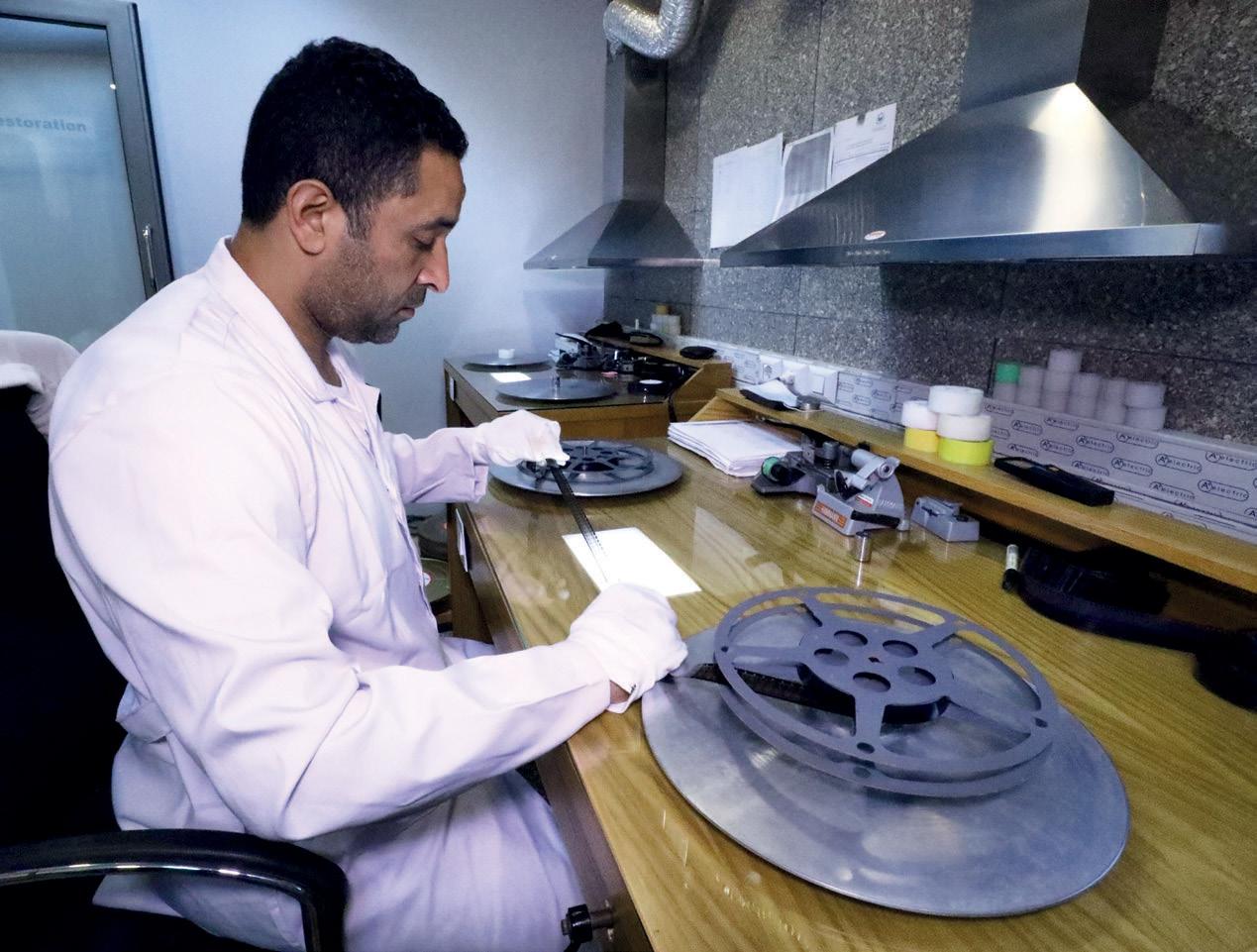



training, the Cintel Scanner G3 HDR+ is now being used on the next phase of the project to restore 300 iconic Egyptian feature films.
The process begins with CRC experts physically inspecting the reels and manually repairing all joints, holes, fractures and ruptures of the degraded negative. The repaired negative is cleaned to remove accumulated dirt, fingerprints and dust, then the reels are scanned in real time at 4K resolution.
In parallel, CRC uses the Cintel Audio and KeyKode Reader to record high-quality audio information from the negative in sync with picture scanning. These automatically correct for wow and flutter even as the scanner speeds change. In addition, KeyKode numbers identify individual film frames, dramatically speeding up post-production workflows. The scanned 4K files are then opened in DaVinci Resolve for colour, restoration and mastering work.
“What makes the Cintel Scanner G3 superior to other scanners is that it is linked to the DaVinci Resolve Studio. Information is automatically
captured from Cintel and imported into DaVinci, saving a lot of time. Other systems do not do that,” Farahat says. “The combination of the Cintel scanner and DaVinci Resolve always gives CRC’s team of six colourists the widest dynamic range to assist in restoring the look of the films.”
In addition to advanced colour correction, DaVinci Resolve Studio also features tools for automatic dirt removal, dust busting, deflickering, spot patch repair with smart fill
Cinema is a huge part of Egyptian culture, but time is running out to preserve that legacy
NADA HOSSAM EL DIN FARAHAT, GENERAL MANAGER, CINEMATIC RESTORATION CENTRE, EGYPT
technology, and advanced temporal and spatial noise reduction.
“Even after being repaired and cleaned, the film retains many scratches and dust which the highresolution scan exposes in fine detail,” explains Farahat. “We consider it lost information from the image and use specialist software to restore that information based on predictive data from adjacent frames. Viewers expect to see high-resolution images, so we cannot offer them anything less than perfect condition.”
The 300 iconic drama, comedy and musical films in the next phase were produced between 1941 and 1995, with several of them featuring renowned filmmaker and actor Farid Shawqy: The Midnight Driver (1958), The Thug (1957), His Majesty (1963) and Shaweesh Noss El-leil, aka Midnight Sergeant (1991). Restoring all of them to their former glory will take three years, after which a selection will be screened at film festivals; some will be given a wider public release so that cinema lovers can enjoy them once more.
CNBC Arabia’s Doha IP production centre commenced operations early this year. The multi-million-dollar studio is a crucial part of the channel’s ambitious expansion plan, which encompasses setting up multiple production hubs across the region, crafting cross-platform content and catalysing the region’s business news landscape. Speaking to BroadcastPro ME, Mohamad Burhan, the network’s CEO, and Shabbir Hussain, Director of Operations and Engineering, delve into the technological innovations underpinning the Doha facility and outline their plans
When CNBC Arabia wanted to expand its facilities, maintaining uninterrupted 24-hour transmission and retaining viewership were important considerations. As these were rather difficult to achieve from its existing location in Dubai Media City, the broadcaster started looking at other locations across the emirate.
“We started exploring opportunities in Dubai, and then the idea to expand to a different country occurred. After studying all our options, we narrowed down on Doha,” says CEO Burhan.
CNBC Arabia’s Doha production centre encompasses two expansive
studios spanning 160sqm and 140sqm. Complementing them are two production control rooms (PCRs) and one master control room (MCR), along with three edit suites and five graphics stations. A studio gallery seamlessly interconnects both studios, with one equipped for virtual reality (VR) production; there are plans to add an extended reality (XR) set soon.
Having had a good experience with Salam Media Cast as the systems integrator for its Dubai HQ, which was revamped a couple of years ago, CNBC Arabia retained them for this

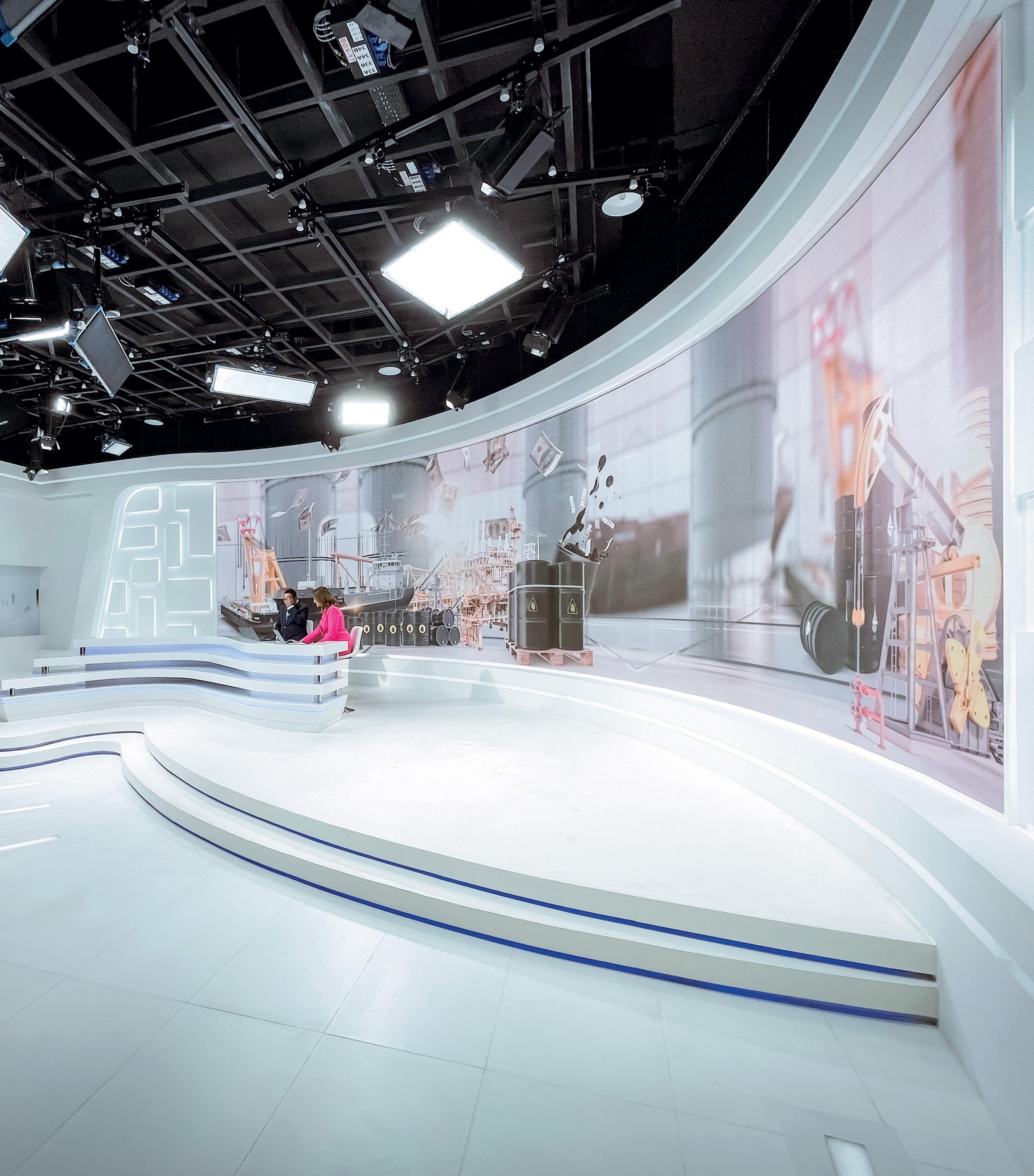


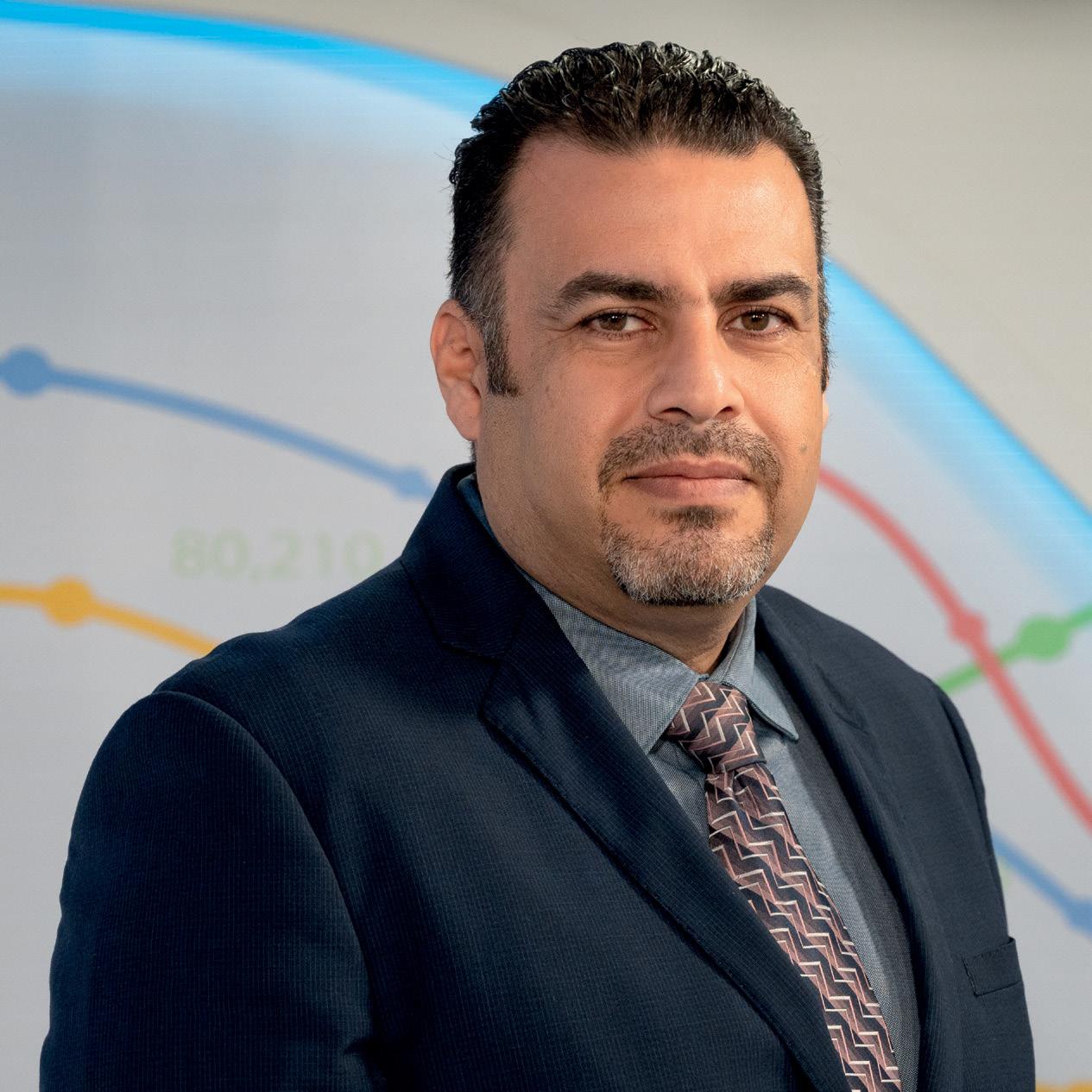
After years of producing material only for social and digital media, we are now moving that content back to linear TV. This is a big move for us and we already see an uptick in our viewership
MOHAMAD BURHAN, CEO, CNBC ARABIA
project as well. The IP solutions for the Doha facility were provided by Evertz Microsystems, while the base system infrastructure was supplied by Riedel Communications. Working with the same tech providers allowed CNBC Arabia to not only centralise its infrastructure but also simplify the ‘talking’ between its multiple bureaus and production facilities.
“Since we toggle between all our studios and bureaus during live hours,
connectivity to each location and live coverage from events and conferences were a key part of our project’s design and deliverables,” explains Shabbir Hussain, CNBC Arabia’s Director of Operations and Engineering.
CNBC Arabia’s Doha studio is now a complete SMPTE 2110 facility, designed to also serve as a disaster recovery (DR) centre for the channel.
“The integration between the Dubai and Doha studios is such that our
daily live shows can be produced from both locations as per the schedule grid. In any case of an emergency, we can use either of the studios with complete coverage from one location,” elaborates Hussain.
Incorporating solutions from Aviwest and LiveU for bureau reporting, the channel harnesses wireless video contribution technology over bonded cellular networks to facilitate seamless connectivity between each of CNBC Arabia’s bureaus and production centres. Grass Valley cameras and switchers further enhance the production capabilities at both facilities. The Dubai and Doha sites are connected via Cisco-managed SDWAN solutions that provide improved performance and network visibility across the broadcast network. The solution is scalable and can adapt to evolving bandwidth requirements. It also gives users access to all services across the channel’s network.
As part of its expansion, CNBC Arabia’s Dubai HQ was also upgraded with the latest Avid and Vizrt systems, along with a deep archive from Avid. The channel migrated all its tapes and assets to the new system.
Future-proofing and scalability have been the guiding principles for all tech implementations. The upgrades have also made CNBC Arabia the first in the region to use Avid|EOD over the cloud. All its bureaus complete the final edit of their packages on Avid SaaS (Cloud Media composer and Avid nexus), and they are then directly downloaded into the Avid system at the location for final playout.
Looking ahead, CNBC Arabia’s expansion roadmap includes additional production facilities in key markets such as Saudi Arabia, with plans to revamp regional offices


into fully-fledged production centres and to then move west to explore opportunities in North Africa.
“We have six offices around the region and are planning to turn these into production centres. We started with Doha and will repeat the same exercise in Saudi Arabia. The Kingdom is a major market in terms of business news and we plan
to launch a big facility there soon,” says Burhan, who claims that CNBC Arabia’s ambitious expansion plan seeks to benefit the wider industry as well, aiming to “raise interest among investors in the region’s business sector and urge the business community to be more actively engaged in the business news industry … When I was in Doha, everybody

was talking about our new production facility. They wanted to know how they could be a part of this growth. We are helping develop the business news environment in the region.”
Burhan points to another crucial factor in the channel’s success: its editorial policies. “What we have done on the tech side is great, but what I am proud of is how our editorial values have kept pace with the ever-changing consumer demands and technological advances.
CNBC Arabia has been in the market for over two decades and we’ve seen competitors come and go. Over the years we have proved that we are here to stay, and this can be credited to the way we handle our editorial. We have no political agenda. Whenever someone is looking for accurate and unbiased business news or need a credible lead on the market, they turn to us.”
CNBC Arabia’s expansion plan is also spurred by the breadth of its viewership. Regional time differences were affecting viewer numbers as it sought to capture audiences across the Arab world. With studios in different markets, the channel will be

able to implement specific broadcast hours for each one. Together, these initiatives are part of the broadcast network’s strategy to transform from a channel into a “network that focuses on the most active
economies in the region”, explains Burhan. “In addition to the horizontal expansion, we are also aiming for vertical expansion. After years of producing material only for social and digital media, we are now moving
that content back to linear TV. This is a big move for us and we already see an uptick in our viewership.”
The channel is actively re-tailoring its social and digital content for television, and a prominent aspect of this is shortening the shows. With reduced viewer attention spans, Burhan’s team found that 25 minutes is the ideal screen time for any programme. He cites the example of CNBC Arabia’s Din wa Dinar programme on Islamic banking, with its duration halved to 30 minutes as it prepares to return to the screen.
Fully aware of the vast changes sweeping across the regional news industry, Burhan concludes that CNBC Arabia is not daunted by competitors. “Competition in the market is great. For us, it’s a way to look at the mirror and see where we are and how to further develop our work.”
Since we toggle between all our studios and bureaus during live hours, connectivity to each location and live coverage from events and conferences were a key part of our project’s design and deliverables
SHABBIR HUSSAIN, DIRECTOR OF OPERATIONS AND ENGINEERING, CNBC ARABIA
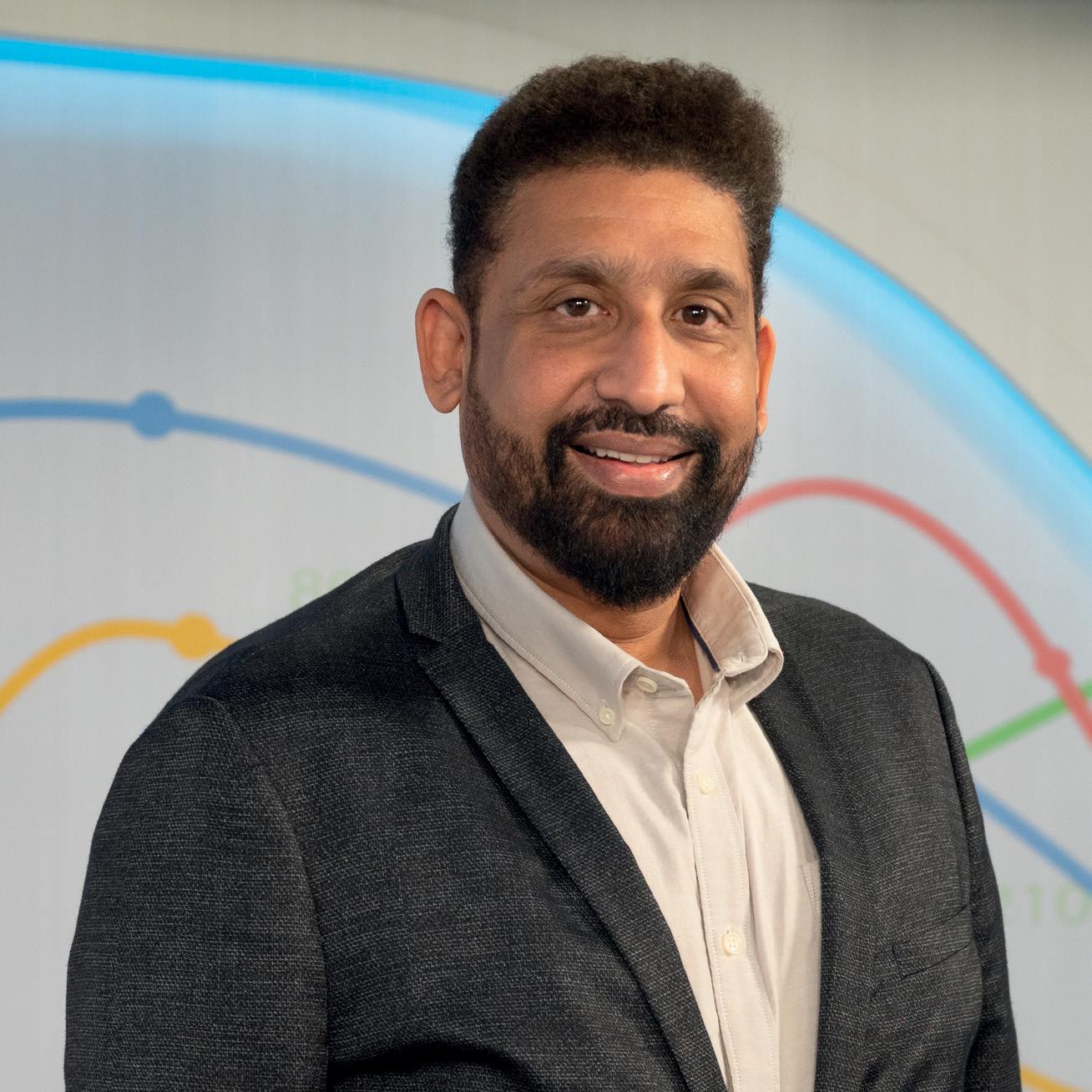


An important part of CNBC Arabia’s newsroom gear is a comprehensive Avid solution that enables the broadcaster to streamline its workflows, enhance collaboration and drive innovation across the organisation.
“We transmit huge amounts of content each day and we were spending so much time re-editing and transcoding files before sharing between locations,” explains Shabbir Hussain, Director of Engineering and Operations at CNBC Arabia. “With Avid’s solution, our teams are now working seamlessly and synchronised and we can focus on delivering high-quality programmes.”
An Avid customer for more than 15
years, CNBC Arabia previously used another newsroom computer system (NRCS) with third-party integrations before switching to Avid MediaCentral | Newsroom Management (iNEWS). With the Dubai and Doha facilities as well as news bureaus across the Middle East, CNBC Arabia needed a comprehensive and integrated newsroom workflow efficiency solution from a single vendor so that content could be easily shared between locations and delivered to end users as fast as possible.
Avid’s solutions offered a unified user experience through its web-based MediaCentral | Cloud UX, bringing together scriptwriting, video viewing and editing,
logging and access to archive content. Editors work in Media Composer to craft packages for air, powered by the video sharing capabilities of MediaCentral | Production Management, with Avid NEXIS shared storage. Avid ingest and playout servers are deployed in both sites for robust workflows to get media in and play media out to air.
Another key aspect of CNBC Arabia’s transformation was the adoption of Avid | Edit On Demand, a cloudbased platform for seamless media sharing and collaboration, removing the need for on-premises infrastructure in the bureaus and providing a simplified way of creating content that

can be easily accessed by both main studio locations. CNBC Arabia uses a subscription package encompassing all locations, giving the organisation leverage and flexibility to upgrade to a better system without a heavy initial investment.
The broadcaster’s migration to the new solution was not without its challenges. Solid support from the Avid team, including sales, pre-sales, professional services and technical support, delivered a successful outcome. Teams worked on the two systems during the transition period, ensuring that change was sustainable and individuals were properly trained.
“Our team was highly motivated by knowing they were migrating to a more straightforward system,” says Hussain. Using the web-based MediaCentral | Cloud UX, staff can view and browse content in either site on a unified user interface and then use MediaCentral | Delivery to exchange content swiftly for use by their editorial teams. This solution also allows staff to view stories in either site and transfer them by simply dragging and
dropping. In Dubai, CNBC Arabia’s infrastructure is still based on SDI, while an IP-based infrastructure is now deployed in Doha. The Avid solution handles both scenarios efficiently. While viewers may not notice any change to their viewing experience, the technical infrastructure behind the scenes is vastly different.
Avid | Edit On Demand, which runs in the Microsoft Azure Cloud, enables CNBC Arabia to create, edit and distribute content with ease and efficiency. Its distributed teams also benefit from a sense of reliability and consistency, which is crucial in the fastpaced media production world. “With Avid | Edit On Demand, we now have a centralised process to bring content into the cloud. It has made our lives much easier,” says Hussain. Looking forward, the flexibility and scalability

offered by Avid’s subscription packages will enable CNBC Arabia to adapt to evolving needs and take full advantage of all system capabilities.







Explore our latest innovations, including the meshLINK live contribution solution and the hi human interface intuitive control platform, designed to enhance your work ow, streamline content delivery, and engage your audience like never before.








www.broadcast-solutions.me







News organisations around the world are grappling with a series of challenges that range from audience engagement and reliability, to the rise of digital and social media platforms and adapting news formats for these mediums. This transforming news landscape, its opportunities and challenges were the focus of a panel discussion at the recent BroadcastPro ME Summit KSA. We bring you a summary



News consumption in the MENA region is undergoing massive changes, driven by factors such as increased mobile connectivity, high internet penetration and social media usage, according to a report by Strategy& Middle East and Google News Initiative. Newsrooms, therefore, have had to evolve rapidly. The news panel, moderated by Karim Daoud, Partner at Strategy& Middle East, and featuring Riad Hamade, Director of Business News at Asharq News; Ruba Ibrahim, COO of Blinx; and Jamie Angus, COO of Al Arabiya, discussed this changing landscape at the summit.
Strategy&’s Karim Daoud kicked off the discussion by stating that digital and social media platforms have become the preferred sources of news for global audiences. He was referencing a Reuters worldwide survey, where 22% of the respondents said they start their news journey via a website or social media app. The digital acceleration has created a new dynamic and news organisations are constantly innovating to meet these changing preferences.
There’s a marked shift in news delivery as well as consumption patterns, noted Jamie Angus, Al Arabiya’s COO. Most legacy news organisations are now rebranding themselves as ‘digital first’. In terms of consumption, the trend is to offer news where the consumer is. He cited the example of digital displays in building elevators, which have started screening news headlines in addition to commercials.
“What’s changed in the digital world is that your news consumption comes to you based on where you are and what you’re doing at the time. The time when audiences used to lean forward and have an appointment to view or read the news, that’s still in place but not universally,” he explained.
The pressure to innovate doesn’t stop. We are constantly learning, trying new things and measuring engagement
RIAD
He also stressed the importance of remembering that consumption patterns are changing not only for younger audiences but also for older people. “The UK’s communication regulator Ofcom says that 10% of adult audiences get their news from social media platform TikTok now. In the United States, 40% of the TikTok audience is aged between 30 and 49,” he said, accepting that he too spends as much time finding news on TikTok as on the Al Arabiya or BBC websites.
Riad Hamade, Director of Business News at Asharq News, suggested using the term ‘building multimedia platforms’ instead of ‘digital first’ to describe the transformation the
news industry is undergoing.
“The concept of ‘digital first’ implies that there are two types of media: outdated legacy media (such as print and TV) and digital media. At Asharq, we are not a TV station that has a website and a social media presence. We see ourselves as a multimedia platform that tries to reach our audience in multiple ways. It is a conscious decision to keep TV as one of our platforms,” he explained. “We accept that people of all ages are consuming news in different ways. Some want a big TV screen and some prefer smaller screens such as those in lifts or on mobile devices. We just see these as different ways to convey information.”
Hamade also emphasised the need to use different visual formats for different screens. “Each platform has its own requirements and this is coupled with the pressure to innovate for every kind of platform. We are constantly learning and trying new things,” he said, describing how Asharq is experimenting with an “L-shaped visual format” that includes lots of information and data along with the presenter’s visual profile. Such a format is great for office settings which keep the TV running on silent. “With this visual


format, if the audience sees something interesting on the screen, they can raise the volume and take in more details.”
Improving news storytelling in broadcasting Blinx, which boasts a robust native digital-only platform with content produced specially for Gen Zs and millennials, did not aim to be a news organisation but events such as the war in Gaza forced the platform into covering them. This was a challenge, since it didn’t have resources on the ground to become a news provider. Another challenge the company faced was its audience profile. Initial research conducted by Nielson Media Company for Blinx showed that the platform’s target audience “doesn’t like the word ‘news’ and wanted to be entertained even while consuming serious issues”, revealed Rubai Ibrahim, COO of Blinx. Blinx found the answer to this with a novel “non-news format that is reliable and appeals to the youth. Our stories are short, informative, inspiring, entertaining and most importantly, credible,” said Ibrahim. “We didn’t want to compete with news players; news channels provide enough information.
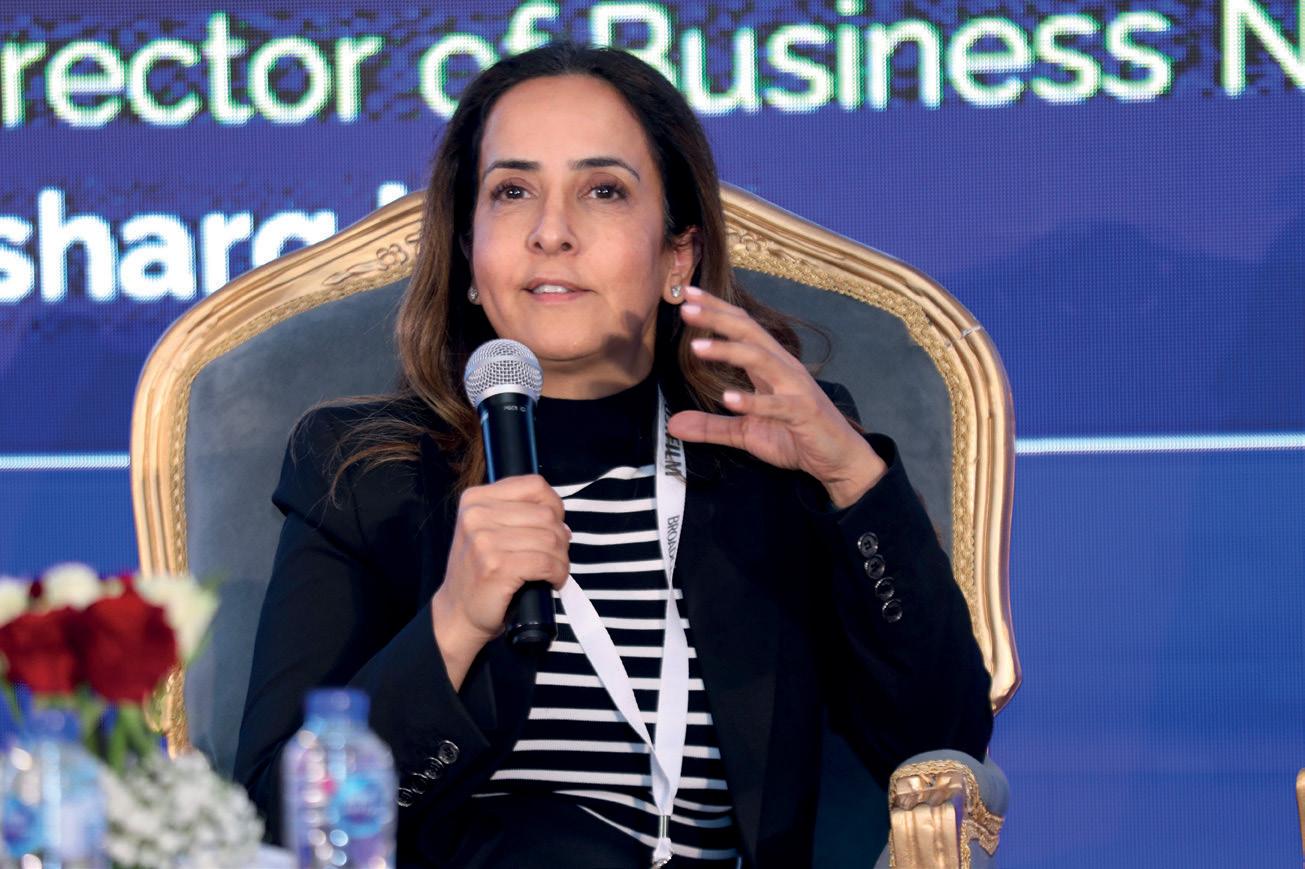
So we decided to cover the news through telling the stories of people who make the news. We steered away from political leaders; our heroes are the common people. That’s how our stories resonate with our audience. We portray stories of children and families and the challenges they face due to lack of resources. We offer a human perspective on social, political and economic situations.”
Tech innovations: AI and virtual studios
Blinx was able to implement this format quickly due to its extremely flexible
Whether you’re a commercial business or a state broadcaster, you have to measure audience engagement and consumption numbers with every tool available
JAMIE ANGUS, COO, AL ARABIYA
digital set-up, showing that technology plays a vital role in helping media outlets keep up with audience demand for different types of formats. “People get bored very quickly, meaning that studios get burned out fast. There has to be a lot of flexibility and diversity in production and this is where technology plays an important role,” explained Ibrahim. Extended reality (XR) technologies which Blinx employs, such as augmented reality (AR), virtual reality (VR) and mixed reality (MR), allow production studios to overcome any limitations posed by mobility and geography, enabling them to place people in any environment realistically. However, advanced tech is a doubleedged sword. While it enables news producers to come up with innovative formats, it also permits the “creation of synthetic content at very high degrees of believability”, cautioned Angus. “The extremely low complexity set of inputs that current technology allows is immensely exciting yet utterly terrifying for news organisations. It points to a world in which people will be unable to distinguish easily, particularly online, between real and synthetic pieces of media content. This is going to


upend our industry in lots of ways.”
In this scenario, reliability emerges as the biggest concern that news organisations are facing globally. Traditional media outlets are still considered more credible compared to social media platforms, which face elevated concerns about fake news. It comes as no surprise then that combating misinformation and reinforcing credibility are the top priorities for news networks.
Angus believes it’s here that brand awareness becomes central to audience behaviour: “When people don’t know what to believe in, they will choose news organisations based on some sort of pre-existing awareness they have of that brand. Trust in the brand becomes their central proposition.”
For young digital brands like Blinx, organic growth is their strategy for brand building. “We are growing organically and this is a conscious decision we have taken to know our audience better. Organic growth does slow down our numbers, but it gives us complete transparency about our audience and their consumption habits. If we boost our content, it will be misleading.”
We steered away from political leaders; our heroes are the common people. That’s how our stories resonate with our audience
RUBA IBRAHIM, COO, BLINX
Additionally, several news organisations are tackling fake news by pivoting towards fact-checking products. Unfortunately, this isn’t enough. “The fact-checking content only ever reaches a fraction of the audience that the original content reaches,” lamented Angus.
“Fake news moves very fast but fact-checking doesn’t. By the time you get around to do a fact-check, which takes time and takes effort, the train has moved and millions of people have seen the fake news while only thousands see the fact-check,” added Hamade.
However, the panellists agreed that fact-checking efforts are valuable and

have the potential to produce robust journalism. They also concurred that social platforms will have to be more accessible and offer more audience engagement while holding journalists more accountable.
Moving to the topic of audience engagement, all the panellists agreed that digital platforms have made it easier and faster to get feedback from viewers. “There is a massive change in the culture in newsrooms – they are more open and listening to the audience. We now have instant feedback on stories, and this allows us to change stories that don’t work. Young journalists entering the industry understand that we’re making content to be consumed and not for a sort of nebulous and elevated purpose that just looks after itself. Whether you’re a commercial business or a state broadcaster, you have to measure audience engagement and consumption numbers with every tool available,” emphasised Angus.
Giving the example of Asharq, Hamade explained that as a business news channel they had to ensure that


aspect was always the focus of their stories. “We are a business news channel and our primary audience is investors who are looking for information that will help them invest their money. So even if we cover politics, it is with a business or economic angle to it. The pressure to innovate doesn’t stop. We are constantly learning, trying new things and measuring audience engagement. If the engagement is not great, we stop and try something else. It is a continuous process and includes all platforms, even television.”
Live data-driven content has become the mantra for news platforms. “With live data, you know how people are reacting and if they are engaging with the story or not. This allows you to adapt and modify your formula along the way,” said Ruba Ibrahim.
For Blinx, data has been central to its operations right from the beginning. “Data sometimes gets you to certain alleys that you never thought of; this includes countries, gender and even ethnic groups,” Ibrahim explained. Armed with nuanced data, Blinx has not only been able to engage with its target audience but has also gleaned information about
the audience who visited its platform looking for specific information and then catering to that segment.
“You cannot ignore the people who come knocking on your door; you cannot make them feel that you don’t cater to them. You want to retain them. Although we started with Gen Z as our target audience, we then saw older generations consuming our content
too so we started measuring and tracking those journeys and modifying our content based on that data.”
Now digital media outlets can track almost every person who interacts with them: their bandwidth, streaming experience and whether they watch videos partially or to the end. Such detailed analysis allows producers to tweak their content in real time, making data a very powerful instrument.
Amid entertainment reels and videos that go viral, news is fighting to stay relevant. This is evident in the innovations and strategies that news organisations are actively adopting to push boundaries of content creation and delivery.
In the words of Karim Daoud: “The different approaches to news address one fundamental problem: an overwhelming [lack of interest] and disengagement on the part of audiences. But we need this category to succeed because societies function much better when the right information reaches the right people at the right time.”


Impressive N+1 systems: high levels of redundancy, automated and cost effective.





150 W – 6 kW: compact, efficient and affordable.

Les Chenilles, a short film by Michelle and Noël Keserwany, recently premiered in the Arab world at the El Gouna Film Festival, where it was named Best Arab Short Film. This French-Lebanese production has also received several international awards. In an interview with Vijaya Cherian, the directors and producer offer a behind-the-scenes glimpse into their artistic journey


What inspired you to tell the story of Les Chenilles, particularly focusing on themes of exploitation and female solidarity?


Actually, we don’t really focus on women; rather, our focus is on human experiences. The emphasis on women in our stories is more instinctive than anything else. Les Chenilles delves into multiple layers of the human experience, regardless of gender, aiming to capture the essence of our struggles and triumphs as individuals navigating through life. From the challenge of integrating into a new city while carrying the weight of a tumultuous past, to the innate desire for autonomy and self-defence and the profound significance of friendship during times of vulnerability, we tried to tell a story that explores myriad themes that from our perspective resonate well together.
As co-directors, after having the space to explore the intimacy of our characters, we transitioned into another deep theme: the exploitation of women, particularly within the business world. This guided our storytelling approach, inspiring us to blend personal narratives, observations and research into historical accounts of women’s exploitation in the silk industries during the 19th century in the Levant. Through the lens of the characters Asma and Sara and their journey, we seek to shed light on the overlooked moments of solidarity and support found within women’s communities – a narrative rarity in a mainstream media saturated with depictions of female rivalry and competition.
Were there specific events or experiences that motivated you to address these themes?
Les Chenilles started with discussions with Sam Bardaouil and Till Fellrath [the film’s producers] from La

and Noël Keserwany.
Les Chenilles is also about finding a balance within ourselves, or within intimate relationships, in order to find a safe space to go back to when the world around us feels unstable
MICHELLE AND NOËL KESERWANY
Biennale de Lyon, through whom we had access to the archives about the silk trade between France and the Levant in the end of the 19th century. These archives captivated us with all the details about exploitation of the working class, and more so that of women back then. The more we delved into these archives, the more we saw the direct relation they had with our contemporary political situation and the multifaceted crisis we are facing today in our region. In particular, we were struck by an article by Fawwaz Traboulsi that explores the relationship between
women from Mount Lebanon and foreign silk factories that were installed in the Levant region in the 19th century. In the context of breeding silkworms to create silk, a Japanese prince said around the year 462: “It’s in between the breasts of women that cocoons should be placed to hatch.” Inspired by that disturbing imagery and the difficult conditions under which women worked in French silk factories in the 19th century, especially in Mount Lebanon, we created a modern story of displacement to tackle contemporary aspects of migration: work conditions, gender dynamics and the effect of historical events on our modern lives.
Besides, between 2019 and 2021 we both left Lebanon to start a life between Paris and Beirut due to multiple pressures and the political crisis in the country. In France, we met women from different parts of the world who were going through the same experience, forming safe spaces that felt like home at times when things were tough. The core idea of the film came from there. Going through an abrupt and unplanned
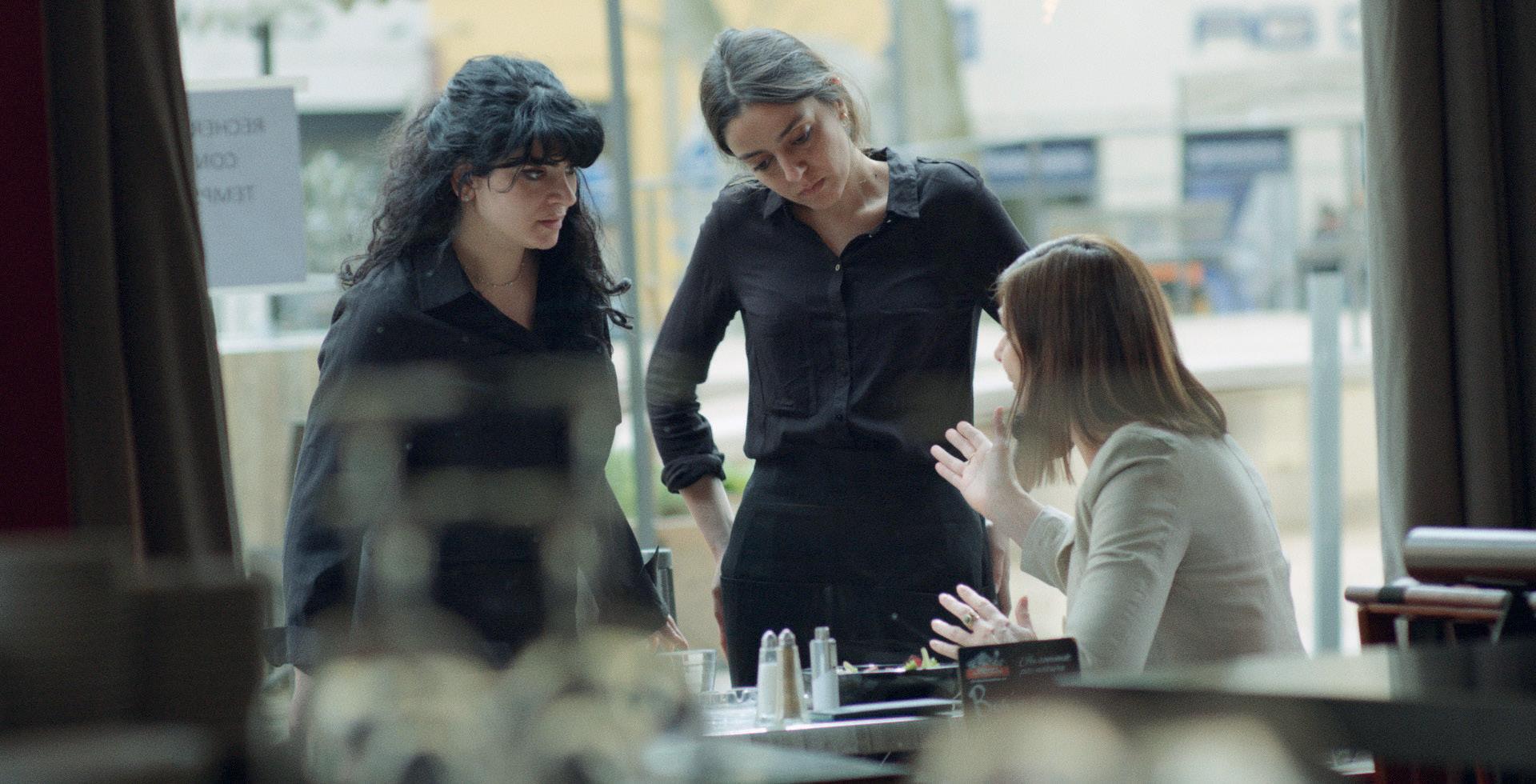
migration was an intense experience full of events and encounters that are at the heart of this film.
Can you share insights into the overall timeline of the project, from conceiving the idea to completing the film?
The film started around 2021 with the Biennale de Lyon, who approached us for a collaboration. Over the course of a year-and-a-half, we engaged in

extensive discussions, research and multiple visits to Lyon for scouting, and reached out to individuals we had previously collaborated with on other projects. At the end of this phase, our intentions were clearly defined. In 2022, Michelle wrote the script. Later on, Marine Vaillant joined the project through her production house Dewberries Films as the shooting date approached, to co-invest and co-produce the film with the Biennale
Les Chenilles follows two female waitresses from the Levant, Asma and Sarah, who work in the same restaurant in Lyon and bear the weight of a home they were forced to leave behind. Although wary of each other initially, they discover a common thread that binds them, one that dates to when the Silk Road connected Lyon to their home countries. Amid forced migrations, they try to move past their animosity to find solace in each other.
de Lyon. With the big support of the two productions, the entire film was filmed in a span of three-and-a-half days. The post-production phase took approximately five months, covering editing, colouring, music and sound. By the end of summer 2022, the film was completed. Its cinematic premiere was at the Berlinale in February 2023.
Filming often comes with interesting and memorable experiences. What anecdotes stand out for you from the production of Les Chenilles?
During filming, Noël and Masa improvised most of the dialogue on set. Karim Ghorayeb, the DoP, captured their reactions as they embarked on a real walk from dusk till dawn. By a stroke of luck, we stumbled upon fencing students practising with their swords in the middle of a small square. Rather


than interrupting production, we seamlessly incorporated them into the scene after securing their permission. Their participation added a surreal touch, amplified by the sounds of swords clashing and the intensity of young women and men fighting. Asma and Sarah’s tense and uneasy walk in the film gained a new depth from
We have very different characters but we do have very close ways of seeing and analysing things, which makes us able to collaborate closely MICHELLE AND NOËL KESERWANY
this unexpected addition. Similar spontaneous moments unfolded on set, where we fostered improvisation and spontaneity to maintain the authentic interaction between the characters and the urban landscape. Les Chenilles is also about finding a balance within ourselves, or within intimate relationships, in order to find a safe space to go back to when the world around us feels unstable. And in this, one of the best moments behind the scenes was when we were thinking of the creation of the whole film from scratch, and the balance we tried to create between us while uniting on some tasks but also splitting other tasks to feel complementary. This space is very similar to what Sarah and Asma go through in the film. Going through a lot of insecurity and challenges while being close is a hard task, and we believe the making of the film was full








of such moments of finding balance. The same aspect was revealed between Masa Zaher, who plays the role of Asma, and me, Noël (playing the role of Sarah), while rehearsing. The rehearsals were based on us meeting for several days and spending time together, going from doing corporal exercises where each one of us tries to fill the void that the other leaves, through physical exercises: carrying each other, finding balance between our bodies, trying to lean on each other … Besides the exercises, we spent time talking, taking walks, eating and having drinks together. We never rehearsed a scene as is, we only practised getting closer, because the closeness in the film cannot be faked. Reflecting on the film now, these behind-the-scenes moments between Masa and me, alongside other team members and friends, resonate at various levels.
Were there moments when you had to make creative decisions to effectively convey your message?
The entire process revolves around making decisions to refine the form and ensure it serves the narrative we intend to convey. We begin by establishing a solid and clear narrative core, around which the form remains highly adaptable to support this narrative,
We fostered improvisation and spontaneity to maintain the authentic interaction between the characters and the urban landscape
rather than the other way around. Despite not having studied cinema, we refrain from limiting ourselves, focusing solely on our main intention and the reason for creating the film. Everything else involves allowing ourselves to experiment and select the form that best serves the message. In Les Chenilles, this led to the adoption of a hybrid format. However, this decision-making process was delicate, as we aimed to maintain a clean, simple story, avoid excessive experimentation and preserve visual balance.
As co-directors, how do you manage collaboration and decision-making?
We have been working together on our political music videos for 12 years now. Les Chenilles is our first short film, but we know each other deeply as we have been very close as sisters and while working together. We have very different characters but we do have very close ways of seeing and analysing things, which makes us able to collaborate closely all while being complementary to the biggest extent.

Securing funding for independent films can be challenging.
How did you go about securing funding for Les Chenilles?
We were very lucky to have the support of La Biennale de Lyon and of Kadist since the very start of the project, as they were already in touch with Michelle and Noël around their previous works. We also managed to secure private funding, and my company has invested to provide the necessary means to produce this film.
Did any unique strategies or partnerships play a crucial role in financing the project?
La Biennale de Lyon, along with the curators Sam Bardaouil and Till Fellrath, have been the first and biggest support to put this film on track. They have been helping out Michelle and Noël from the start to launch their research. Then, thanks to La Biennale de Lyon, we have been able to collaborate with La CineFabrique in Lyon, a professional school that enabled us to work with experienced technicians at accessible rates

and to have access to a lot of equipment and facilities. We have also benefited from longterm partnerships such as the support of the Cité des Arts in Paris, which granted us some spaces for rehearsal.
Were there any unexpected delays or accelerations in production?
The timing was quite challenging! I was contacted a few months before the shoot was planned and all had to happen really fast to be able to deliver the Biennale in due time. So the preshooting went very
fast and all accelerated at this stage. The post-production was slower as it had to be handled between several countries, and all accelerated again during the summer, close to the delivery date, to be ready for the opening of the Biennale in September 2022.
Every film project comes with its own set of challenges. What major challenges did you face during production, and how did you overcome them?
The major challenges were various during the several steps of the
production. Firstly, the means we had were tight compared to the ambition of the film. We had a very small team and most of us had to wear several hats. The rhythm was very dense, as in France we are not used to shooting a 30-minute film in three-and-a-half days. Another challenge was the post-production coordination, as our editor was based in Germany, the colour grade artist in the USA and the lab in Lebanon, while the directors were all in France.
Were there moments when you had to make significant adjustments to the original plan?
We had to take the decision to postpone some shots we didn’t manage to shoot during the planned shooting days and reorganise to get all the needed material. We also had some sound issues on some exterior scenes, so we had to plan other sessions of recording –thanks to Les Studios de la Seine, and most importantly to our sound engineer from Lebanon and a friend he had in France.

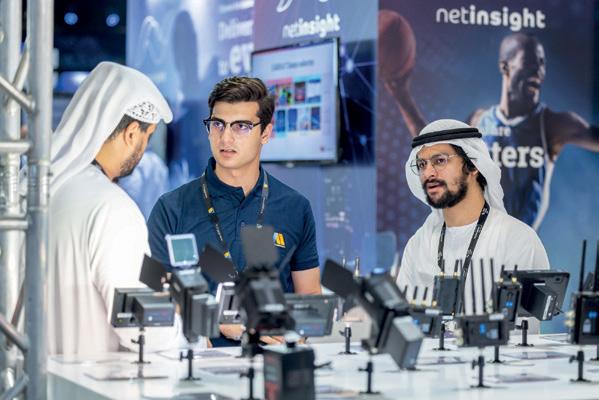




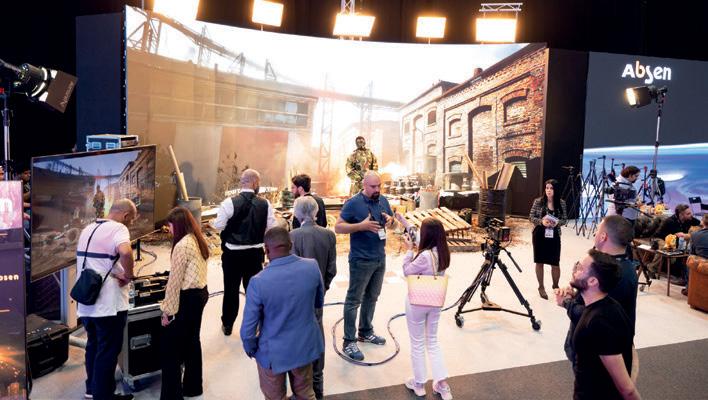



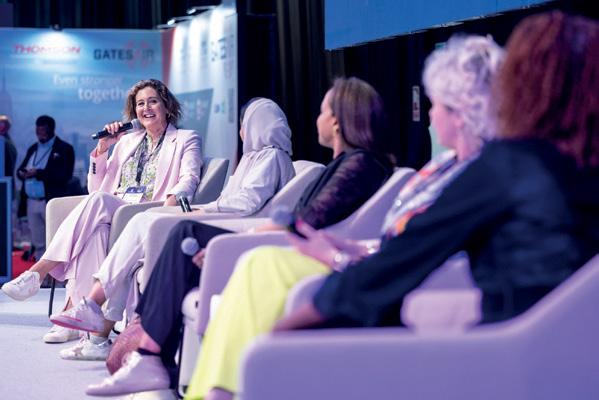

CABSAT is gearing up to mark its 30th anniversary with a grand return to the Dubai World Trade Centre from May 21 to 23. Alongside, the second edition of the co-located event Integrate Middle East, a leading forum and sourcing platform for the global pro AV and media technology community, will also make its comeback, connecting industry leaders with integrated
solution buyers from sectors including education, media, entertainment, hospitality, retail and communication. Since its inception, CABSAT has evolved to reflect the latest trends and technologies in the MEASA (Middle East, Africa and South Asia) region. Organised by the Dubai World Trade Centre in collaboration with key stakeholders from the MEASA media
industry, the event hosts insightful presentations, panel discussions, workshops, product demonstrations and technology master classes, fostering a culture of knowledge sharing. In 2024, the Middle East’s media and entertainment market is estimated to reach $42.72bn, with a projected growth rate of 9.41% to attain $66.99bn by 2029. Positioned as a leading
destination for filmed content, broadcast and satellite industries, the region is undergoing a significant transformation into a content creation hub from a content consumption market. CABSAT 2024 aims to unveil the future of content creation and distribution, serving as a global platform for the media, entertainment and technology industry, with participation expected from over 120 countries.
This year’s event will see the return of the Content Congress, offering insights on the evolving media landscape; the SATEXPO Summit, facilitating innovation within the satellite and space community; and NextGen Content, providing a platform for screening unreleased content and fostering engagement within the creator economy and
sustainable space exploitation. Following its successful premiere in 2023, Integrate Middle East will once again bring together pro AV and system integration tech leaders, attracting buyers from diverse sectors across the MENA region. The event will spotlight the rapid growth of the market, projected to reach $396.41m by 2028, with a CAGR of 8.61% from 2024 to 2028. Integrate Middle East will also delve into advancements in the global smart buildings market, expected to increase from $96bn in 2023 to $408bn by 2030, according to a report by Market Research Future.
CABSAT’s collaboration with Integrate Middle East provides a platform for attendees and exhibitors to access emerging business opportunities across sectors including education,
CABSAT has renewed its partnership with HConsult, a prominent content market specialist in the Arabicspeaking MENA region, to present the MENA Co-Production Salon at the show. Situated within a specially curated lounge adjacent to the Content Congress area, the Co-Production Salon is an invitationonly enclave that brings together the region’s foremost production houses, OTT platforms, TV networks, content investors and brand representatives. Serving as a pivotal platform for exploring co-production and investment opportunities, it seeks to foster the creation of internationally marketable TV and film content.
media, entertainment, hospitality, retail, communication, corporate, events and real estate industries.
Abhishek Ganapathy, Director of Dubai World Trade Centre, said: “We are delighted to be hosting the 30th edition of CABSAT 2024, which will coincide with the second edition of Integrate Middle East, offering a unique platform that brings together leaders in content, broadcast, satellite, media and entertainment sectors. This event has successfully drawn participants from various sectors including retail, hospitality, healthcare, education, media and governments across the MENA region. We anticipate that this collaboration will open newer avenues for technology leaders and integrated solution buyers to explore emerging market trends.”

Heba Korayem, Content Market and Partnerships Specialist at HConsult and host of
the MENA Co-Production Salon, highlighted the significant outcomes of the event: “There are tremendous developments occurring within this seemingly compact space. We have tracked $8m in content investment through
partnership deals directly stemming from the meetings held at the Co-Production Salon in CABSAT. The best part about consistently having the Co-Production Salon at CABSAT is the diverse mix of companies it attracts. It serves as an ideal one-stop shop for our participants, producers and broadcasters. When they attend Co-Production Salon, they stick around because they could also find everything they need, from new technologies to cameras and filming equipment to broadcast support for their content.”
Ross Video is gearing up to commemorate its 50th anniversary at CABSAT 2024. The company will have a large stand dedicated to showcasing the latest advancements in video production technology. Attendees can explore the cutting-edge applications of robotics, graphics, IP and hyperconverged technology across various sectors including broadcasting, sports and education throughout the MENA region. Additionally, Ross will shine a spotlight on its newest product

releases unveiled at NAB Show 2024 in Las Vegas.
One of the highlights of Ross’s presentation will be the introduction of hyperconverged technology, an approach that condenses multiple functionalities into a single streamlined solution. The Ultrix 12G router, a
prime example, serves as the ultimate routing, multiviewer, production switcher and signal processing platform for studios, OB vans and flypacks. Offering flexibility and agility, Ultrix delivers significant cost, space and power efficiencies without compromising on performance. It offers a
wide range of platform sizes from 1RU to 12RU, enabling small and large installations up to 288×288 to build a hyperconverged solution.
Benoit Rousseil, Regional Sales Director – MENA, Southern Europe and Africa, said: “Our presence at CABSAT provides us with a platform to highlight our products and solutions, tailored to meet the distinct needs of our customers in this market. Backed by our team’s expertise and localised support, we are fully prepared to tackle the unique challenges of our MENA clientele.”
Swiss company DAC System SA, which provides solutions for the RF transmission environment, will exhibit for the first time at CABSAT 2024. The company will unveil its DAC product lineup, featuring the RF power meter, RFHawkeye and Apollo SW IoT. DAC System will explain how its advanced RF monitoring solutions empower broadcasters to enhance operational efficiency and minimise downtime.
The RF power meter helps ensure
precise measurement of RF signals, ensuring optimal performance in broadcasting and communication systems. With its 24/7 monitoring of the RFsystem chain, it provides
real-time return loss/ VSWR and true RMS power measurement across a frequency range spanning FM, DAB and TV.
RFHawkeye offers inservice radar technology

capable of pinpointing RL/VSWR degradation and identifying Arcs position in real-time with RF power ON, issuing immediate warnings and alerts.
Apollo SW IoT network management system (NMS) integrates and centralises data from all RF power meter and RFHawkeye devices, revolutionising broadcasting maintenance and monitoring with IoTenabled software. Together, these solutions help broadcasters maximise efficiency and ensure signal quality.
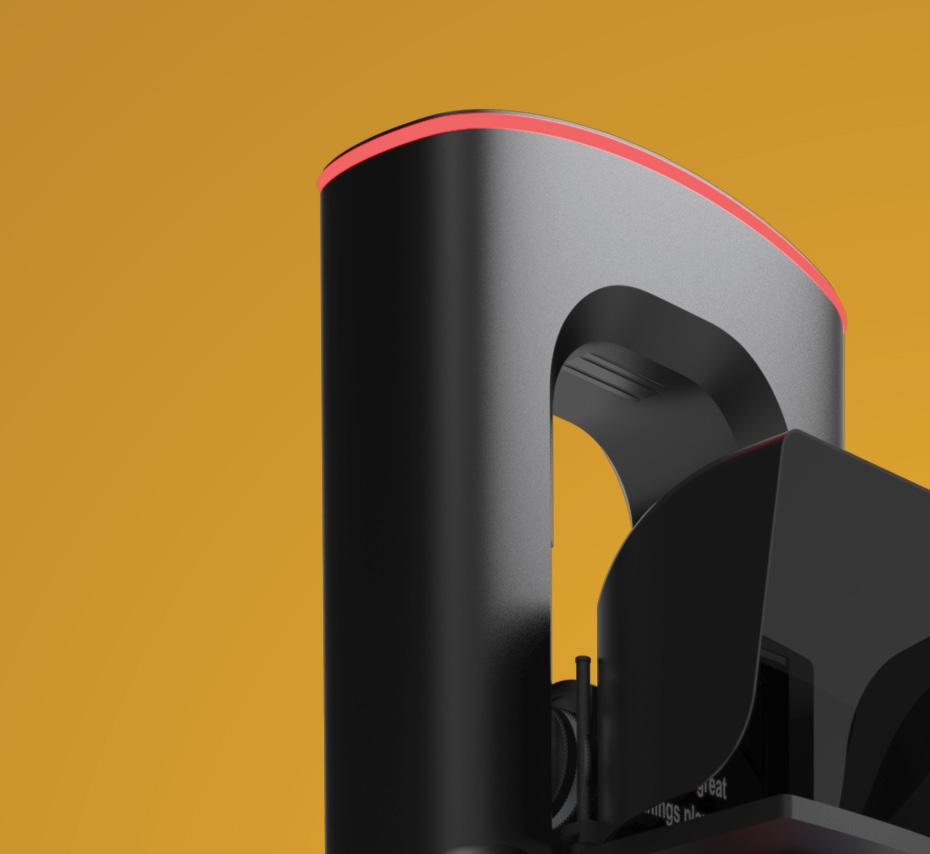





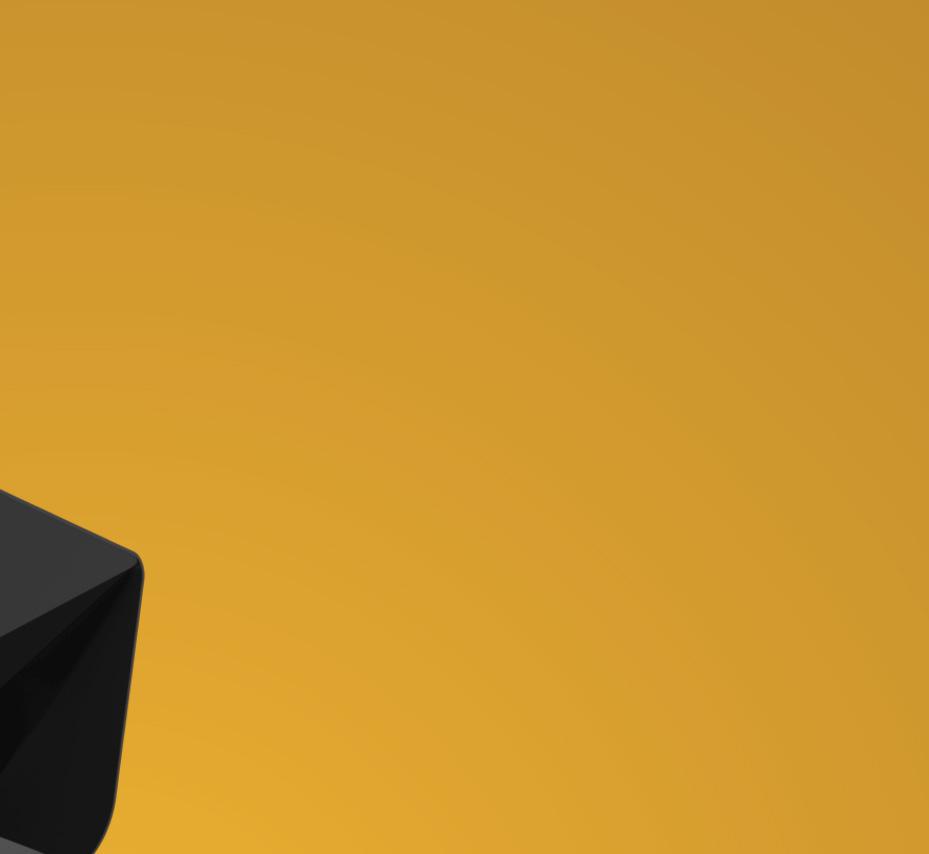


FOR-A will present solutions based on SDI, including 12G for ultra HD, alongside compressed and uncompressed live video standards at CABSAT. Important showcases will include the HVS-190 and HVS-490 production switchers, demonstrating the flexibility available in modern systems. Both offer the capability to integrate NDI connectivity alongside SDI. The HVS-190, a compact 1 M/E switcher, provides
simplicity in a compact form factor, while the HVS-490 uses FOR-A’s exclusive MELite technology to extend its 2 M/E banks to 6 M/E performance with up to 12 keyers. These switchers
also feature a web server for configuration and control from any distance, for remote production set-ups.
Highlighting the ease of building integrated systems, the production switchers will

be paired with the MFR3100EX live routing switcher, which includes director control of a PTZ camera and a multiviewer. The FA1616 offers powerful video processing, supporting up to 16 channels at resolutions up to 4K with colour correction and audio remapping.
FOR-A will demonstrate the simplicity of slowmotion replay with the Envivo server, featuring an intuitive touchscreen interface for fast and secure operation under pressure.
So More Media, formerly known as VSN, will exhibit under its new brand name at CABSAT 2024. Bringing together the combined strength of VSN, Woody Technologies and M&I Broadcast Services, it will showcase advanced media workflow solutions, signalling a comprehensive suite of cutting-edge technologies tailored for the broadcast and media industry. This consolidated presence underscores So More Media’s commitment to delivering innovative solutions that enhance team agility, optimise productivity and fortify security across media
workflows. From asset management to ingest and radio automation, the range of technologies presented at CABSAT creates a dynamic ecosystem designed to meet the evolving needs of the industry.
Key offerings include VSNCrea, a comprehensive solution for effective media planning and management, and So More Media’s media asset management solution, providing a centralised platform for seamless content management and distribution.
Additionally, the IN2IT suite offers intuitive media processing tools for ingest and outgest,
while OmniPlayer revolutionises radio automation with its complete set of tools for content creation and broadcasting.
Aitor Falcó, Sales Manager of EMEA at So More Media, said:
“We are delighted to be back for another year at CABSAT to present our new brand identity in Dubai. This event marks a pivotal moment as we unveil our new brand identity, which integrates the collective expertise, expansive solutions ecosystem and formidable capabilities of VSN, Woody and M&I. We are eager to showcase our unified vision and demonstrate the
innovative solutions we offer to meet the evolving needs of the broadcast and media industry.”
With extensive experience in the MENA market and a focus on strategic partnerships, So More Media aims to elevate its market presence in the Middle East and drive sustained growth through innovation and collaboration. As the company continues to expand its offerings and strengthen its position in the industry, CABSAT 2024 serves as a platform to showcase its unified vision and innovative solutions to industry professionals and stakeholders alike.
STN will come to the show to create awareness about its streaming, cloud-based solutions and expanded satellite occasional use solutions for sports.
STN’s OTT platform MENAFLIX is dedicated to regional channels and programming. MENAFLIX aims to position itself as the premier destination for premium entertainment in the region, offering curated content, localised interfaces and a growing line-up of top channels featuring news, music, children’s programmes, drama and general entertainment. It will also introduce an EPG for free-to-air (FTA) satellite channels, simplifying content

discovery and scheduling while providing valuable analytics to enhance viewer engagement.
Recognising the increasing importance of social media networking for broadcasters worldwide, STN has also launched STN LIVE, a contemporary solution simplifying integration
for channel owners and enabling seamless sharing of content across various platforms. This facilitates real-time interaction and feedback, fostering deeper connections with viewers and adapting to global trends and viewer preferences.
Tomaz Caserman, VP of Sales ME, STN, said:
“Amidst the surging demand for occasional use satellite services in sports, we’ve ramped up our game. Our operations centre in Slovenia has undergone a major expansion, further enabling us to offer comprehensive event coordination, coverage, monitoring and distribution. We’re thrilled to have made significant contributions to some of the biggest and most prestigious events in the region, spanning football, boxing, basketball and even horse and camel racing. Our plan is to grow our market presence by forging new partnerships and showcasing the benefits of our valueadded services.”
MediaGuru Consultants, a media services company specialising in content creation, management and monetisation, will unveil its latest technological advancements and solutions aimed at transforming the industry. With a focus on innovation, MediaGuru aims to deliver cuttingedge products and services that empower businesses and unlock
new opportunities in media and broadcasting.
At CABSAT, MediaGuru will highlight its core solutions, including content digitisation (documents/ photographs/ audio/video), media asset management solutions, end-toend OTT solutions on a SaaS platform, content sourcing and distribution, system integration solutions in
the broadcast vertical, and watermarking solutions for protecting documents and videos.
Sanjay Salil, founder and CEO of MediaGuru Consultants, said: “CABSAT provides us with a valuable opportunity to showcase our latest solutions and connect with industry leaders. We look forward to engaging with attendees to discuss how our offerings can drive
growth and innovation in the dynamic media landscape.”
MediaGuru recently took on new Middle East customers demonstrating its commitment to the MENA market. The company is eager to collaborate on case studies featuring these customers to showcase the effectiveness of its solutions and their impact on businesses in the region.

Vislink Technologies will introduce the next leap in content capture, distribution and monetisation in the realm of live event coverage at CABSAT 2024. At the forefront of its showcase is the launch of DragonFly V, a game-changing addition to its suite of broadcasting solutions.
Vislink’s exhibit at CABSAT promises attendees an immersive journey into the future of live broadcasting. From hybrid IP/COFDM applications and private 5G networks for event productions to state-of-the-art solutions for cloud-based remote production and AI-driven systems for live sports and studio environments, Vislink will demonstrate how it can propel live content to new heights.
At the core of the presentation lies DragonFly V, a compact HEVC wireless
video transmitter crafted for the modern broadcaster. This device sets new benchmarks for capturing real-time, high-fidelity video from POV cameras, UAVs and body-worn cameras. It distinguishes itself with its compact form factor, lightweight design, optimised power efficiency for extended battery life and support for video formats up to 1080P-50/60 HDR, making it a better solution for seamless integration into live broadcast workflows. It offers versatility, featuring HD/SDI or HDMI inputs to accommodate a wide range of miniature camera options. With a maximum COFDM output power of 50mW packed into a lightweight package of just 50 grams, it ensures robust high-definition HDR video transmission in a compact, portable form factor suitable for demanding applications.
Argosy Middle East will showcase Argosy Image ULTRA cables and connectors, SMPTE reels and patch panels at CABSAT, alongside KVM devices from G&D designed to streamline operations, reduce costs and increase performance. It will also spotlight SMPTE and Neutrik OpticalCON tactical fibre assemblies, including the opticalCON Duo, opticalCON Quad and opticalCON MTP connection systems. These assemblies provide a wide range of multiplexed connectivity solutions, including
fibre splitters and highresilience connectors.
“Broadcasters and OTT services in the Middle East are ramping up cloudbased infrastructures and all-IP workflows to address the region’s appetite for high-quality and on-demand content, upping their game to produce HD and UHD content,” commented Razi Baig, GM at Argosy Middle East. “We’re continuously looking at new ways to simplify the installation process and increase signal integrity from the rack to the network, whether that’s SD, HD, 4K, IP or cloud-based.

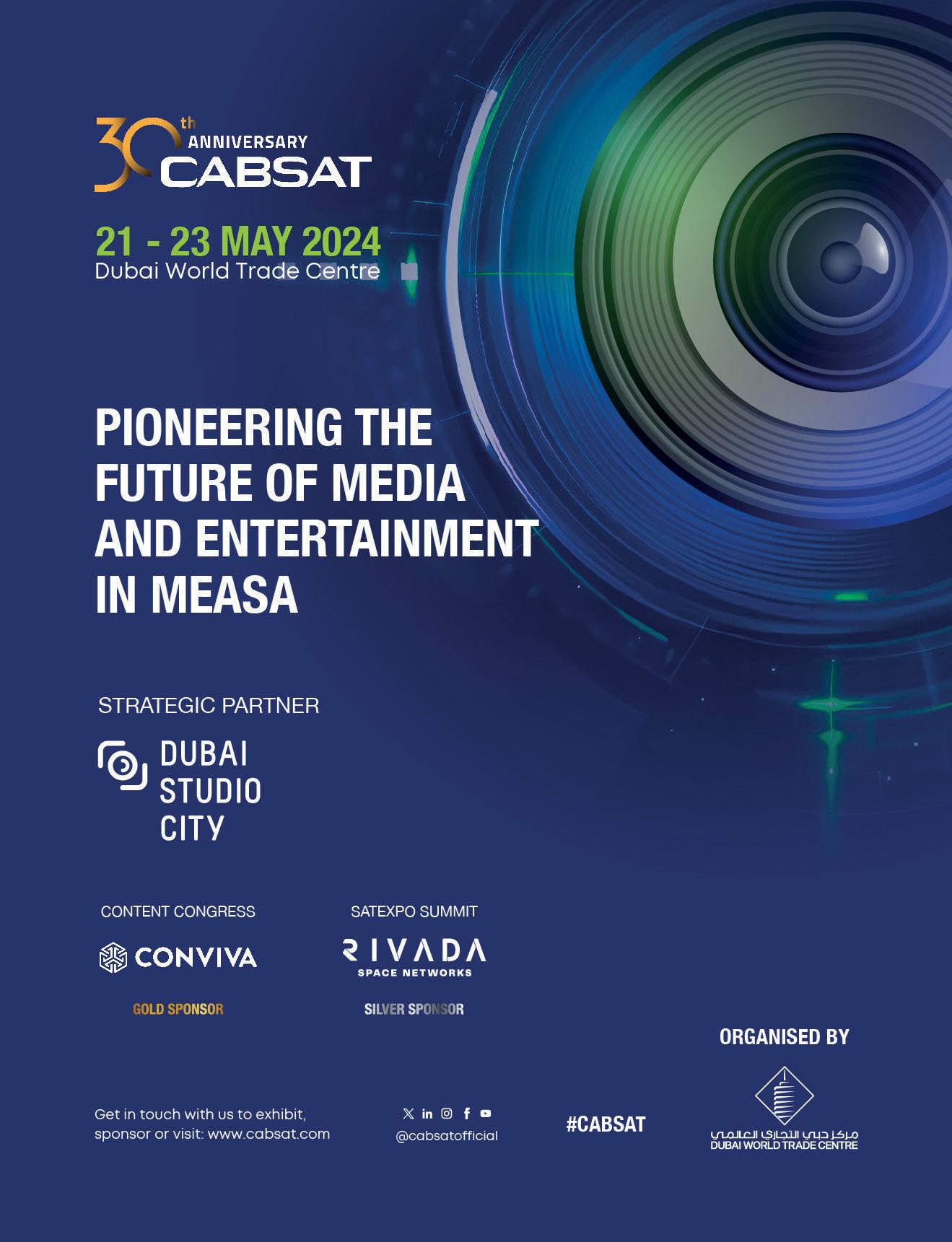

ModernTV, an endto-end OTT solutions provider from the Czech Republic, will unveil its latest advancements in OTT streaming. It offers a comprehensive solution tailored to meet the evolving needs of internet service providers and TV operators. The platform ensures seamless accessibility across a wide range of devices and operating systems, including iOS, Android and smart TVs such as Samsung, LG, FireTV and RokuTV. With a proven track record of success in global markets, ModernTV is looking to explore new opportunities in the Middle East. Leveraging its experience and expertise, it aims to forge partnerships and deliver cutting-edge OTT solutions.
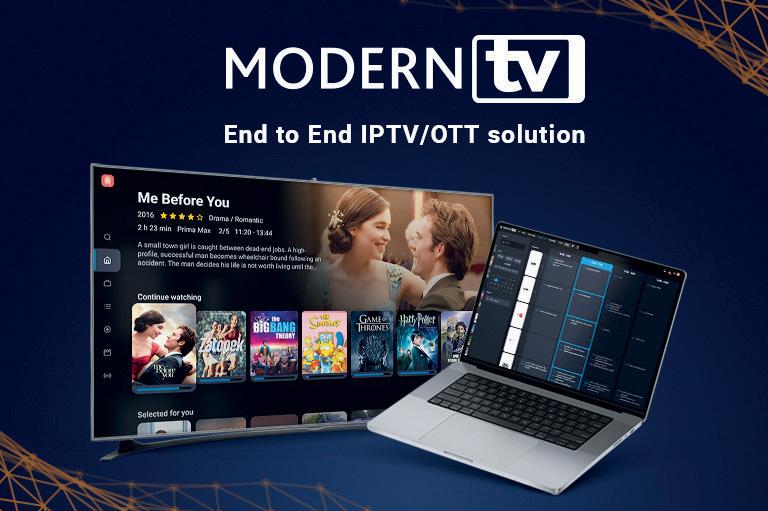
SipRadius, a specialist in live media transport and transcoding, will showcase its implementation of AV1 and JPEG-XS over transport streams at CABSAT. This approach, highlighted at stands with UK distributor Hornets Tech and FOR-A, offers new standards of quality, efficiency and stability for contribution links and remote production. The company has engineered a software-defined ecosystem around open standards, streamlining interoperability for content delivery. A
notable advancement is the introduction of a real-time AV1 codec running on a GPU. AV1 was previously deemed too resource-intensive for real-time encoding. However, SipRadius’ latest implementation opens the door for high-quality links from live content, including applications in remote production. By developing the encapsulation of live AV1 in an MPEG-TS transport stream, SipRadius ensures seamless integration into existing architectures. Moreover, MPEG-TS preserves essential ancillary data such as the real-time clock, enabling the
solution to furnish complete remote links with low latency and highly efficient bandwidth utilisation, even when multiple streams are delivered for comprehensive remote production. Additionally, SipRadius has achieved the first practical implementation of JPEGXS in MPEG-TS. This innovation, standardised by VSF, is a significant milestone, as previous attempts at a functional system had been unsuccessful. JPEG-XS is designed for visually lossless compression with low latency and modest processing requirements.
S tand S2- a 30 a Ateme will unveil solutions designed to empower content and service providers to achieve more while optimising costs. The centrepiece will be immersive experiences on the Apple Vision Pro, showcasing the advancements in 3D stereoscopic video encoding driven by its TITAN encoders. These immersive experiences promise enhanced audience engagement, offering a glimpse into the future of entertainment. Ateme will also present solutions for low-latency streaming and streamlined OTT operations. The endto-end, scalable and future-proof delivery platform encompasses encoders, origin packagers and CDN, capable of seamless integration with any cloud infrastructure. Additionally, Ateme will spotlight premium IP-based contribution solutions combining software flexibility with ultra-low latency, adaptable for cloud deployment.
PRO2024 has all you need to know about the top players in the region’s broadcast and satellite market. A compilation of profiles of broadcast and satellite companies in the GCC, the hardback coffee table book is a valuable resource for not only business entities but also customers looking for a ready reckoner of key industry players.

MAJED AL SUWAIDI
Our industry must continue to champion a collective imperative to nurture homegrown content creators and talent
As online content transcends geographical boundaries at an accelerated rate, consumers have access to a larger ecosystem than ever of world-class content at their fingertips, and media and entertainment (M&E) companies must work harder to remain relevant in the hypercompetitive attention economy. Succeeding in this environment requires a systemic approach that seeks to embed long-term resilience into our industry, and localised content by traditional media organisations or alternative and new creators sits at the heart of driving sustainable growth in the sector.
Leveraging digital transformation is essential, as it continues to reshape media consumption habits in the MENA region. According to a Strategy& report, 90% of all respondents to its survey of 4,500 regional consumers prefer to access news on their mobile devices. This has given rise to new formats such as mobile video and short-form news articles.
It is understandable then that the wave of digitisation is also changing not just how, but also what content is consumed regionally. In the UAE, strategic support through Dubai Media’s vision to enhance intellectual property and nurture homegrown talent in the local media industry is strengthening the local content creation economy.
Demand for non-English content has nearly doubled globally since 2018 and
dominates the MENA market, accounting for 52% of regional demand, according to a report by Dubai Media City-based Rise Studios, in partnership with Parrot Analytics. Arabic-language content represents 27% of the total demand for content in the MENA region, far higher than its 2% pre-pandemic level in 2020.
The business case for fostering an Arabic content creation economy is clear, and regional companies are taking note. In January 2023, Al Mashhad TV launched a brand-new facility at Dubai Studio City to serve Gen Z and young audiences. The channel’s strategy includes the distribution of adaptive, customised content based on analytics powered by personalised AI-powered user experiences.
A growing number of companies are harnessing AI to deliver regionally relevant content experiences from Dubai. Yango, which opened its Dubai Internet City offices in October 2023, launched the Yango Play app in February, enhanced by an AI-powered bilingual voice assistant named Yasmina that can suggest music, hold conversations and provide information in Arabic. Yango Play also unveiled exclusive Arabic content for Ramadan this year, including family sagas, comedies, historical series and music playlists.
These developments speak to the burgeoning demand for Arabic content in the MENA region as well as the exponential pace with which M&E businesses must adopt emerging tech to better serve this segment, and a nurturing ecosystem is essential to address the industry’s legacy and systemic roadblocks towards this goal. With close to 4,000 local, regional and international customers and 40,000 creative professionals, TECOM Group’s Media Cluster is a hub of excellence for tomorrow’s media innovators, co-locating exemplary talents from Al Mashhad TV, Starzplay and Discovery Networks at Dubai Studio City, Rise Studios and Blinx at Dubai Media City, and Nadja Media at the in5 Media incubator in Dubai Production City, uniting global talent with the common goal of elevating the regional media value chain. Our industry must continue to champion a collective imperative to nurture homegrown content creators and talent, and I look forward to building new pathways towards this goal at the landmark edition of CABSAT this May.
MAJED AL SUWAIDI IS THE SENIOR VICE PRESIDENT OF DUBAI MEDIA CITY, DUBAI STUDIO CITY AND DUBAI PRODUCTION CITY AT TECOM GROUP PJSC


The industry’s best-selling Bi-Color LED panel has evolved. Astra IP is tough and water-resistant, delivering intense output in lightweight 1x1, half-size and 2x1 fixtures with fast set up for high-performance broadcast lighting in demanding environments.
litepanels.com/astra-ip


